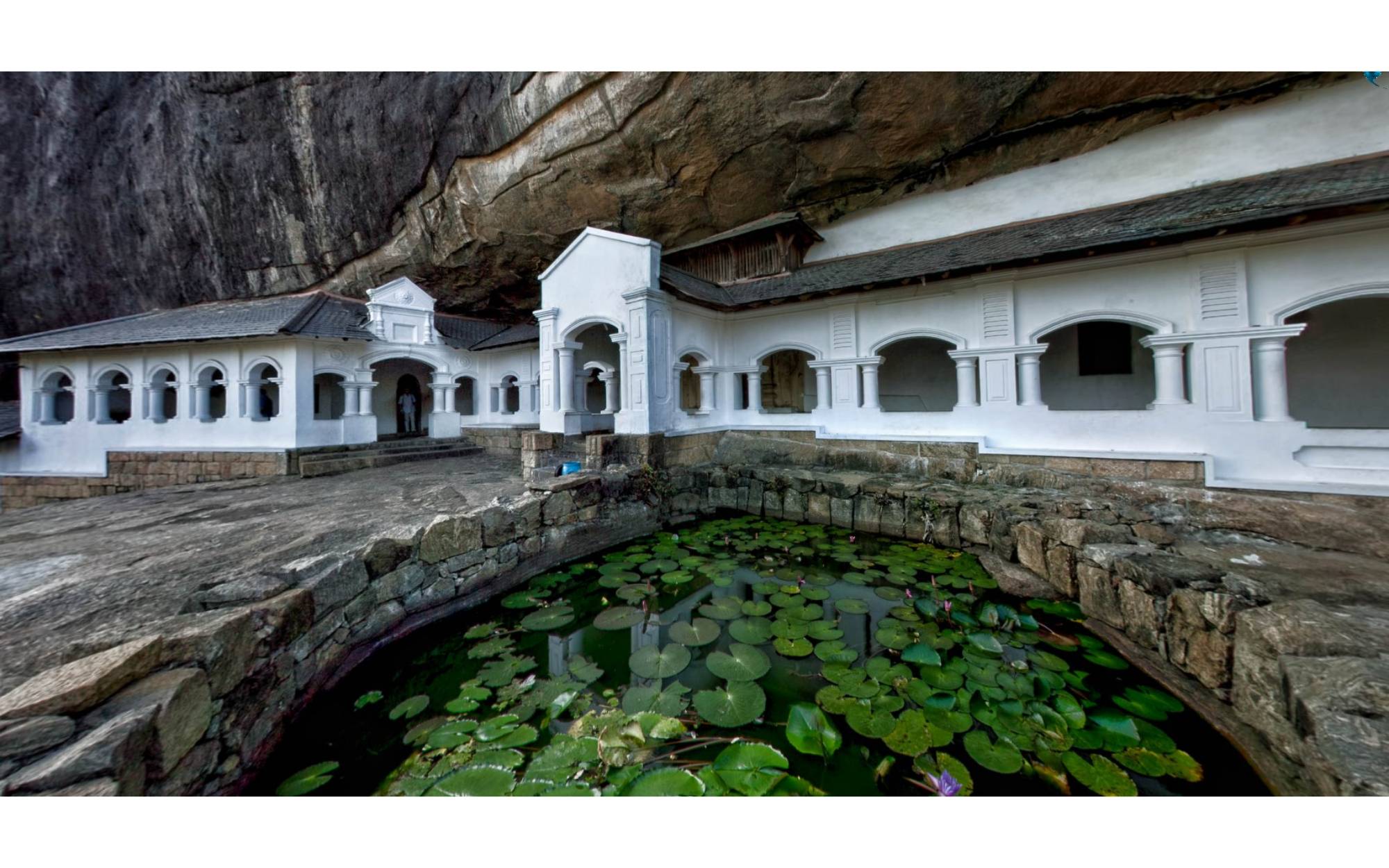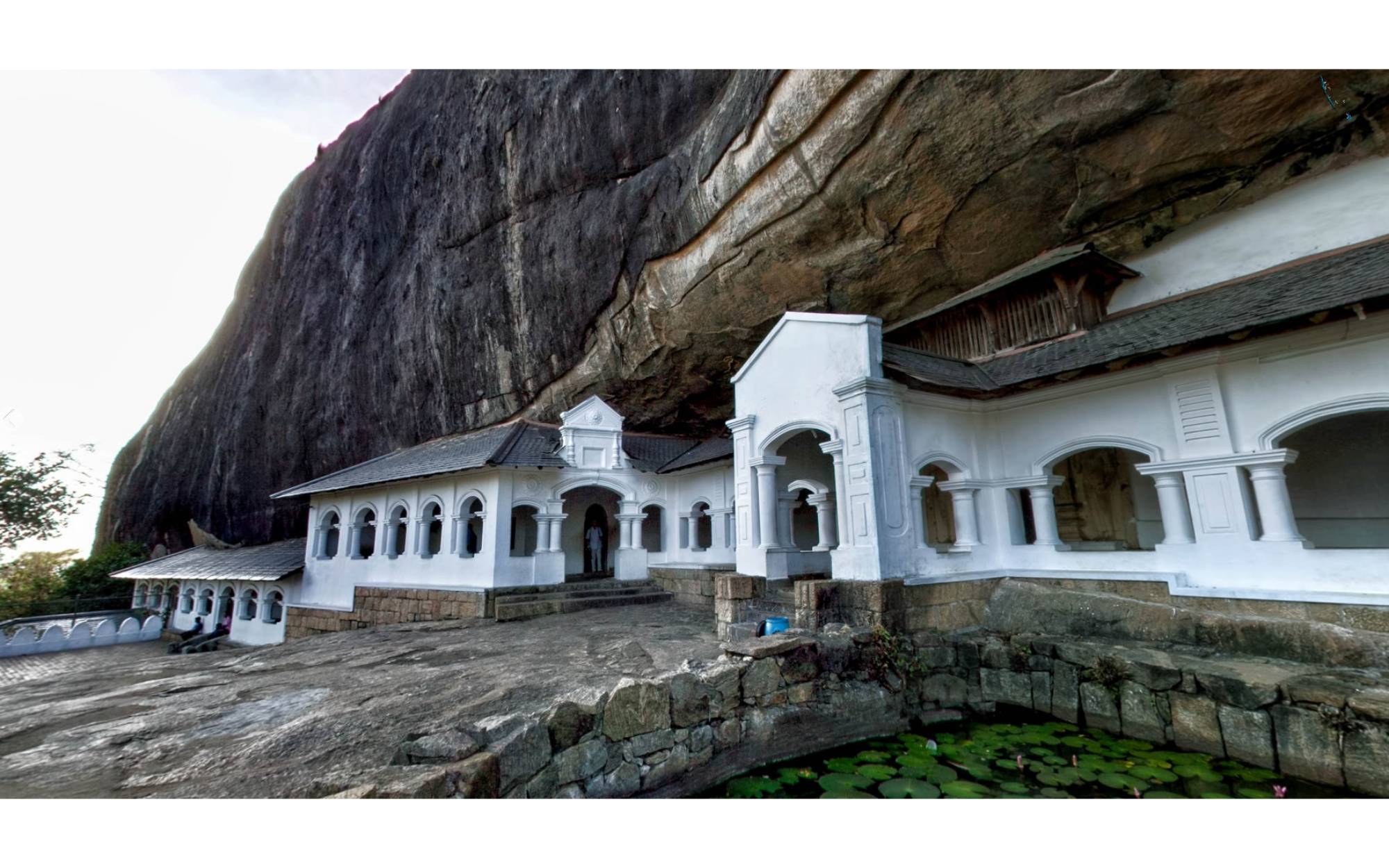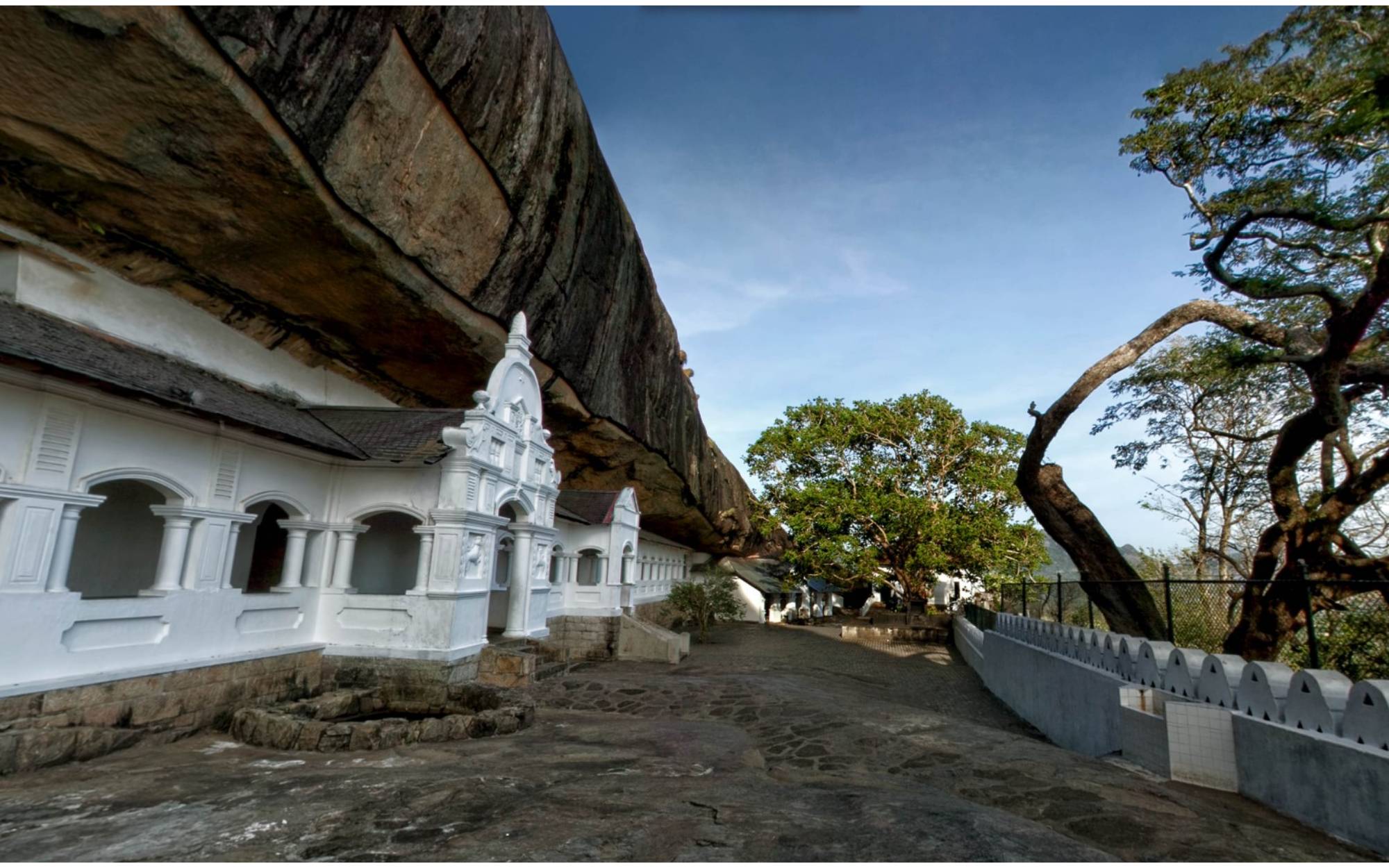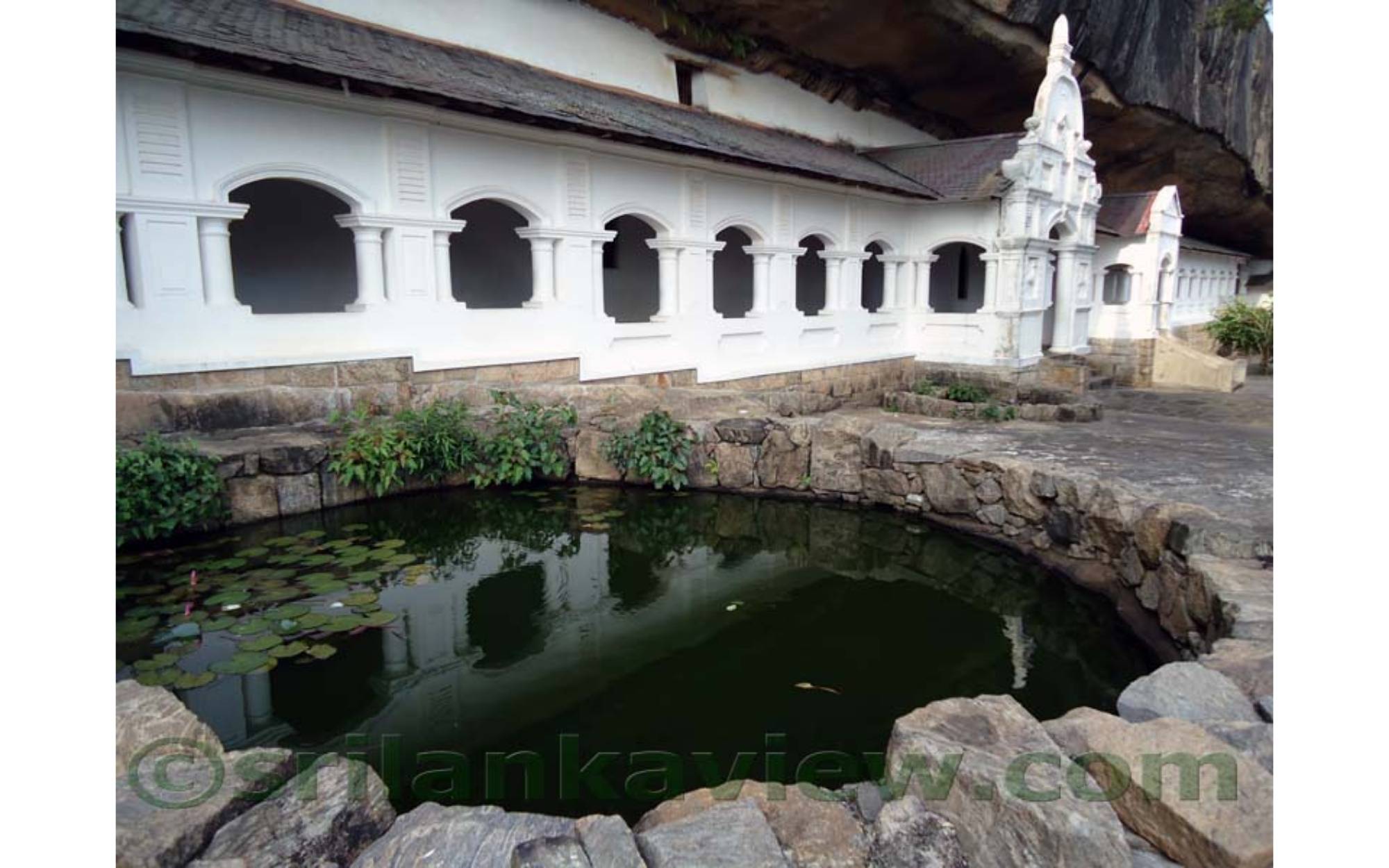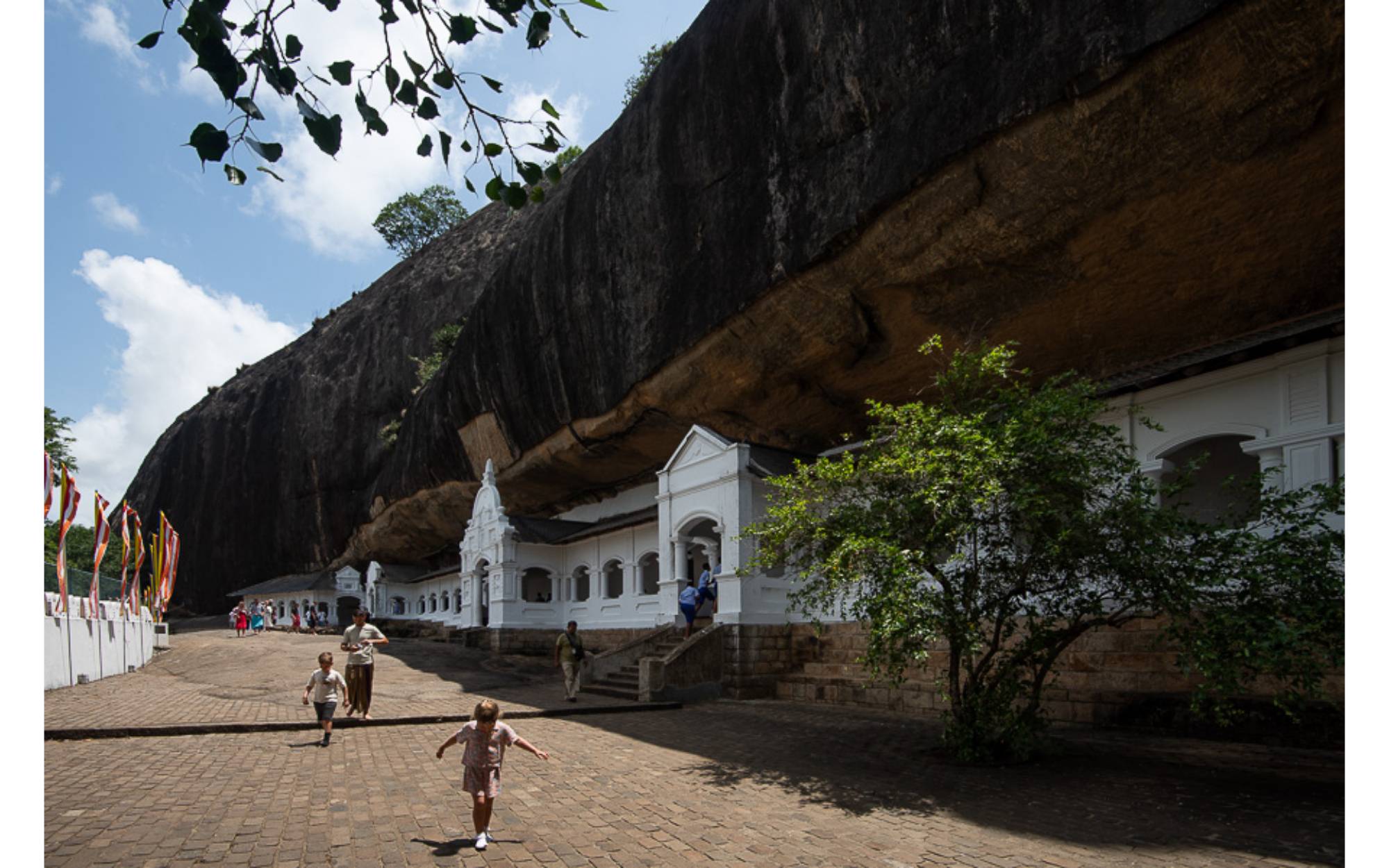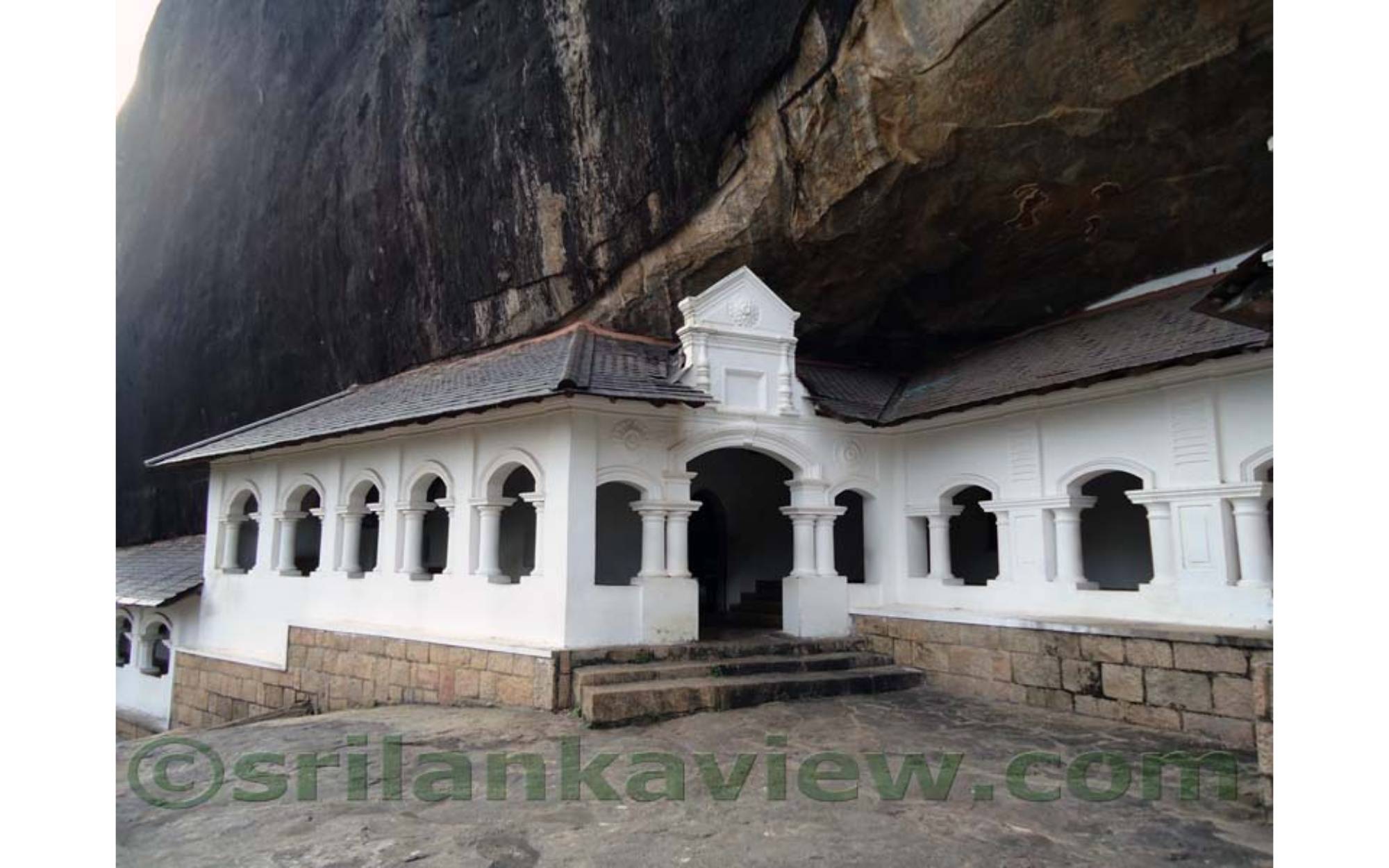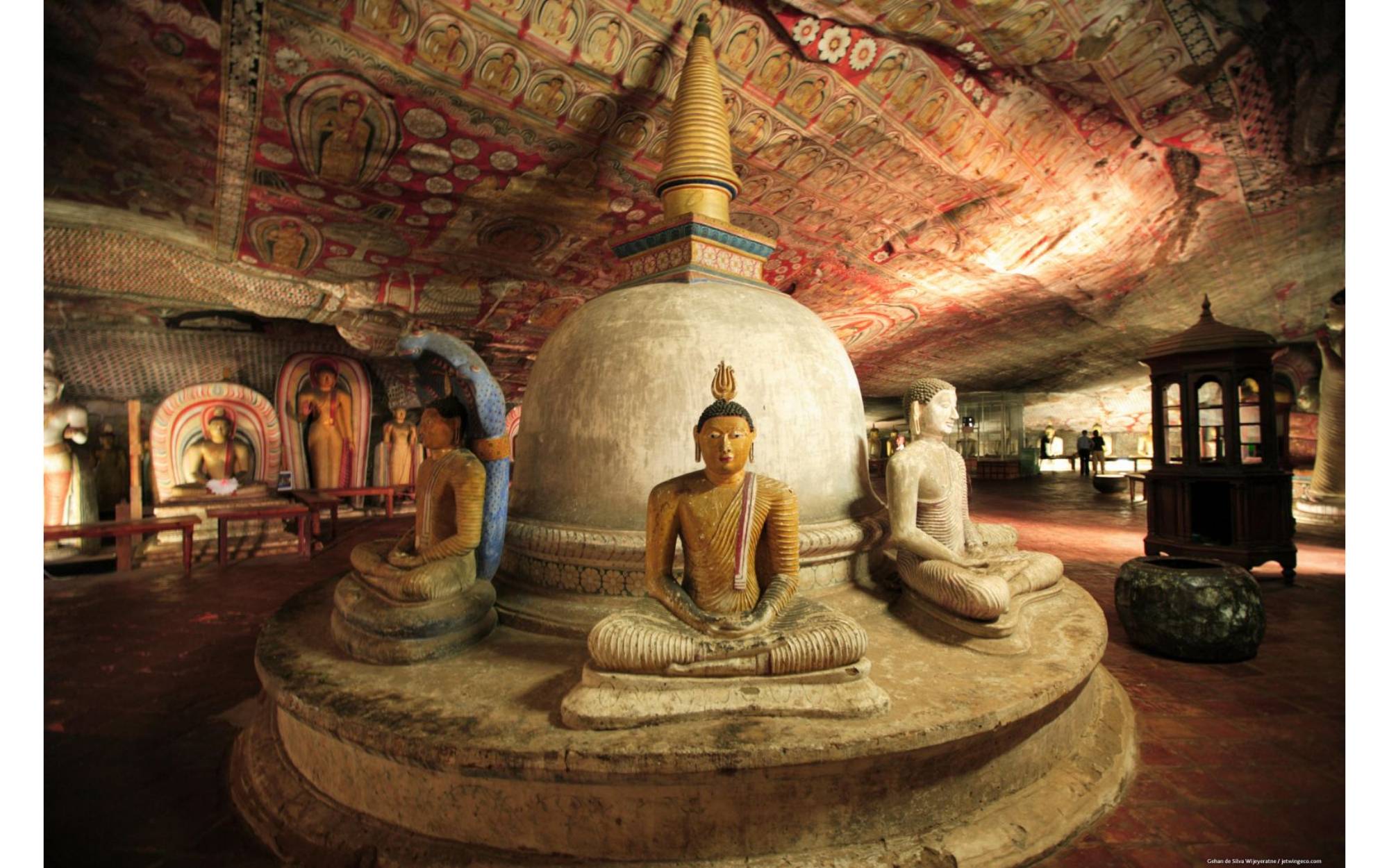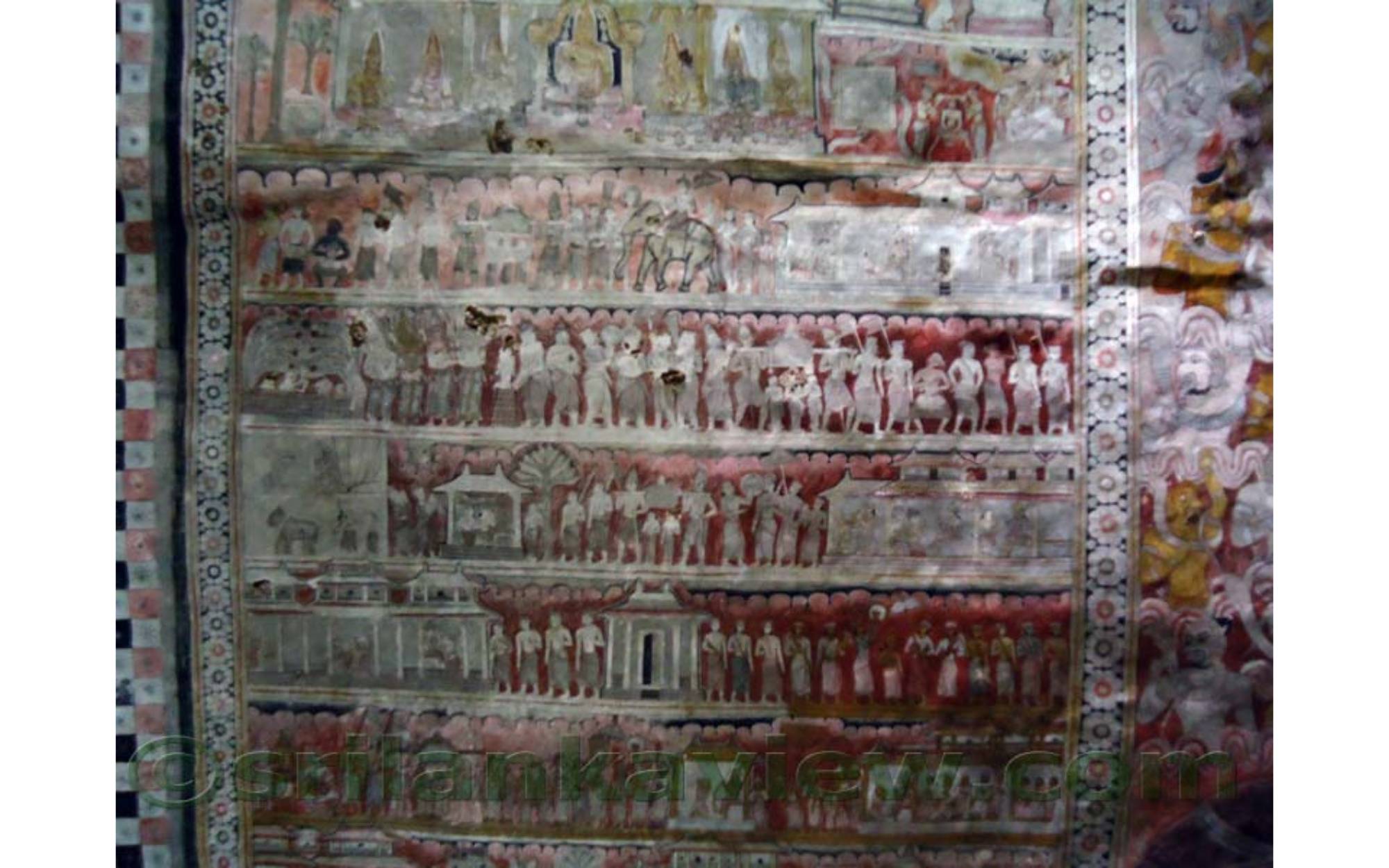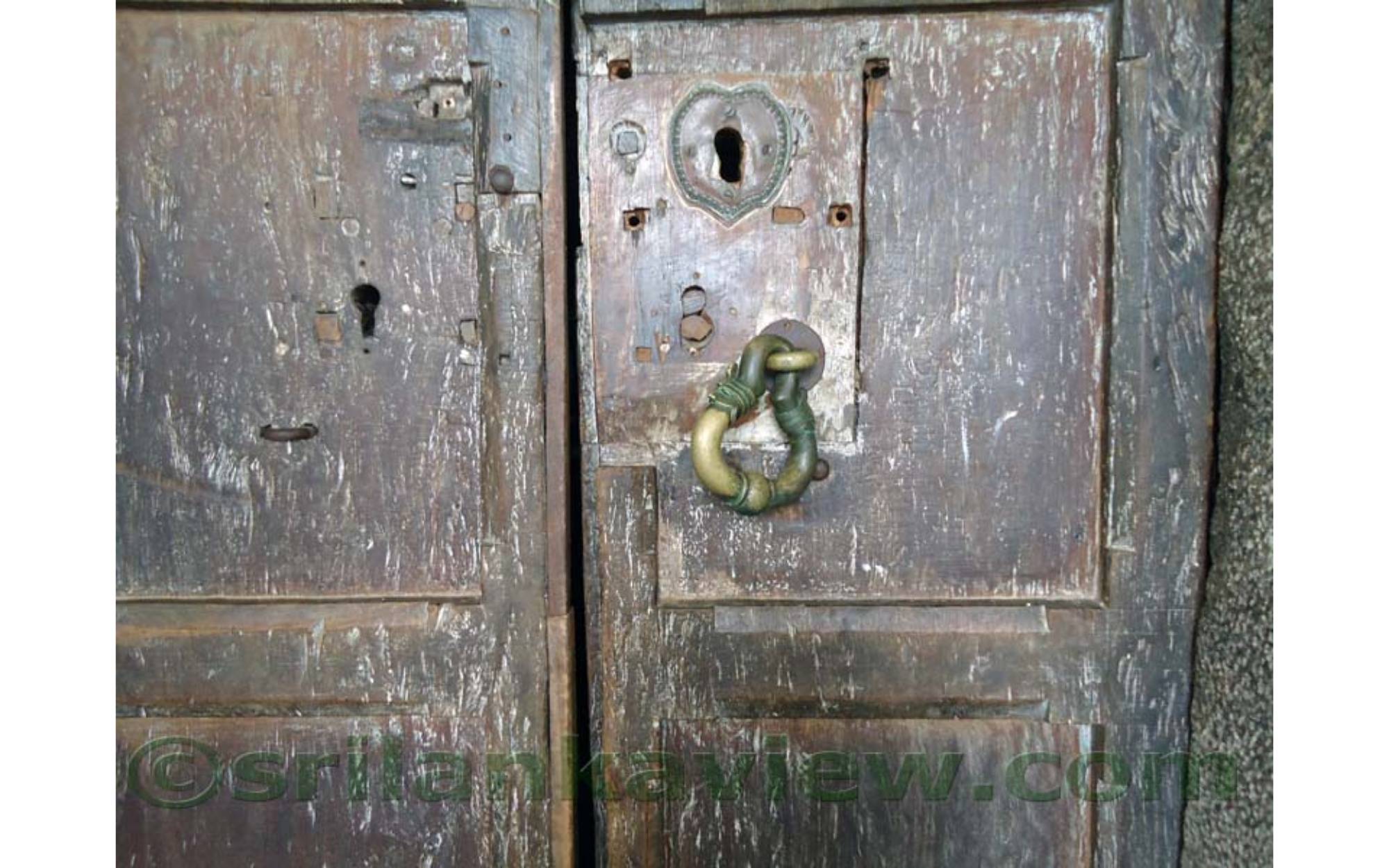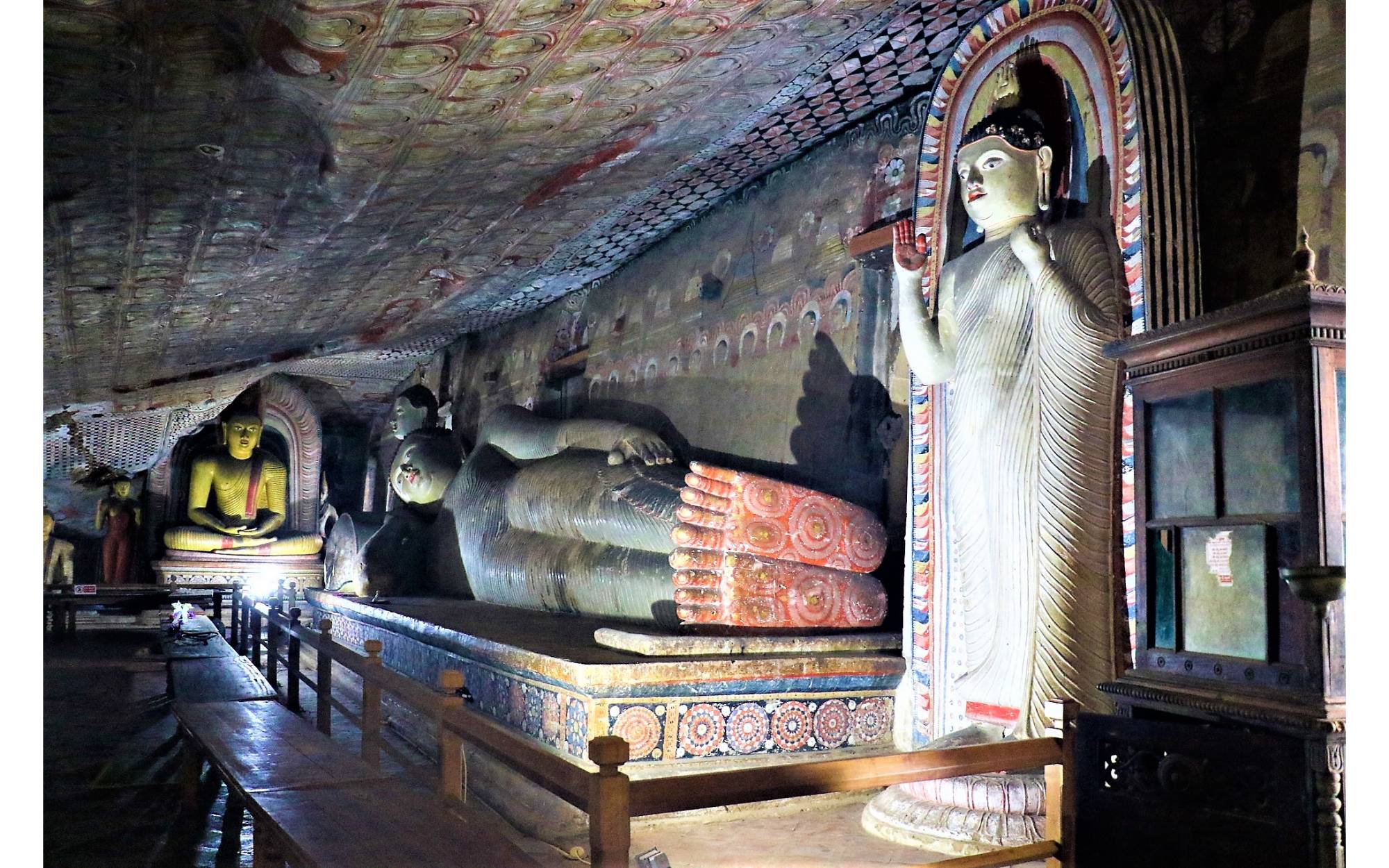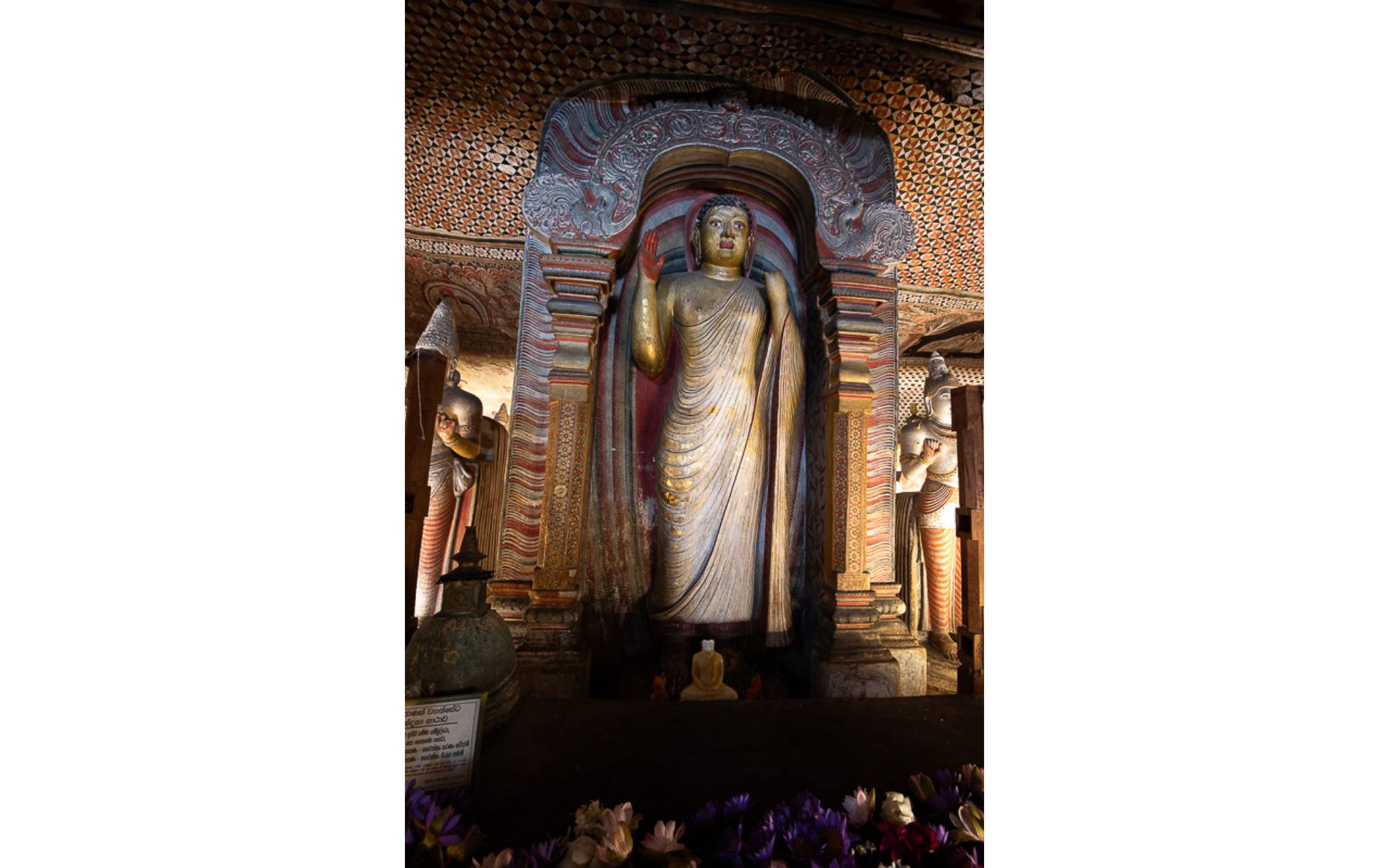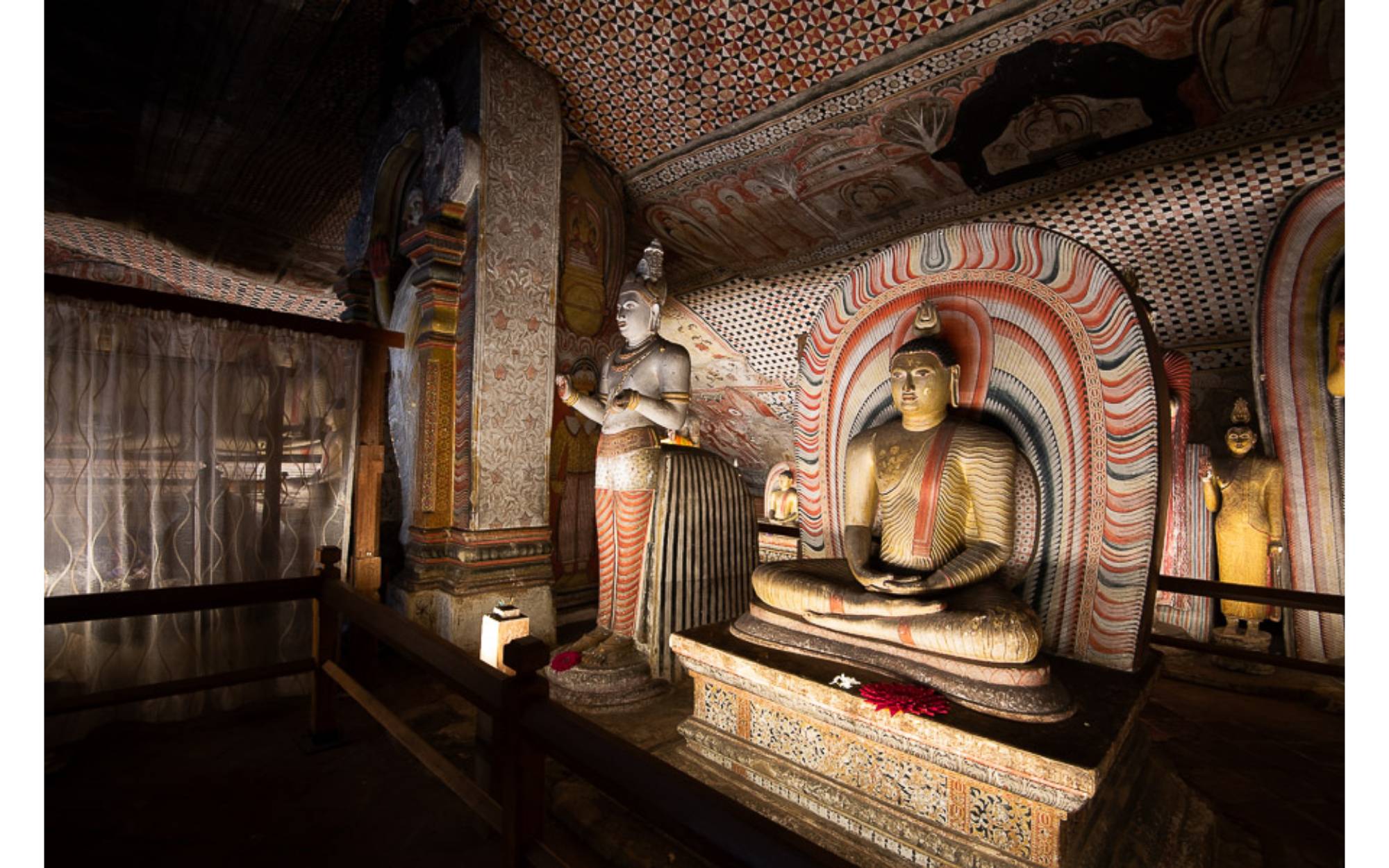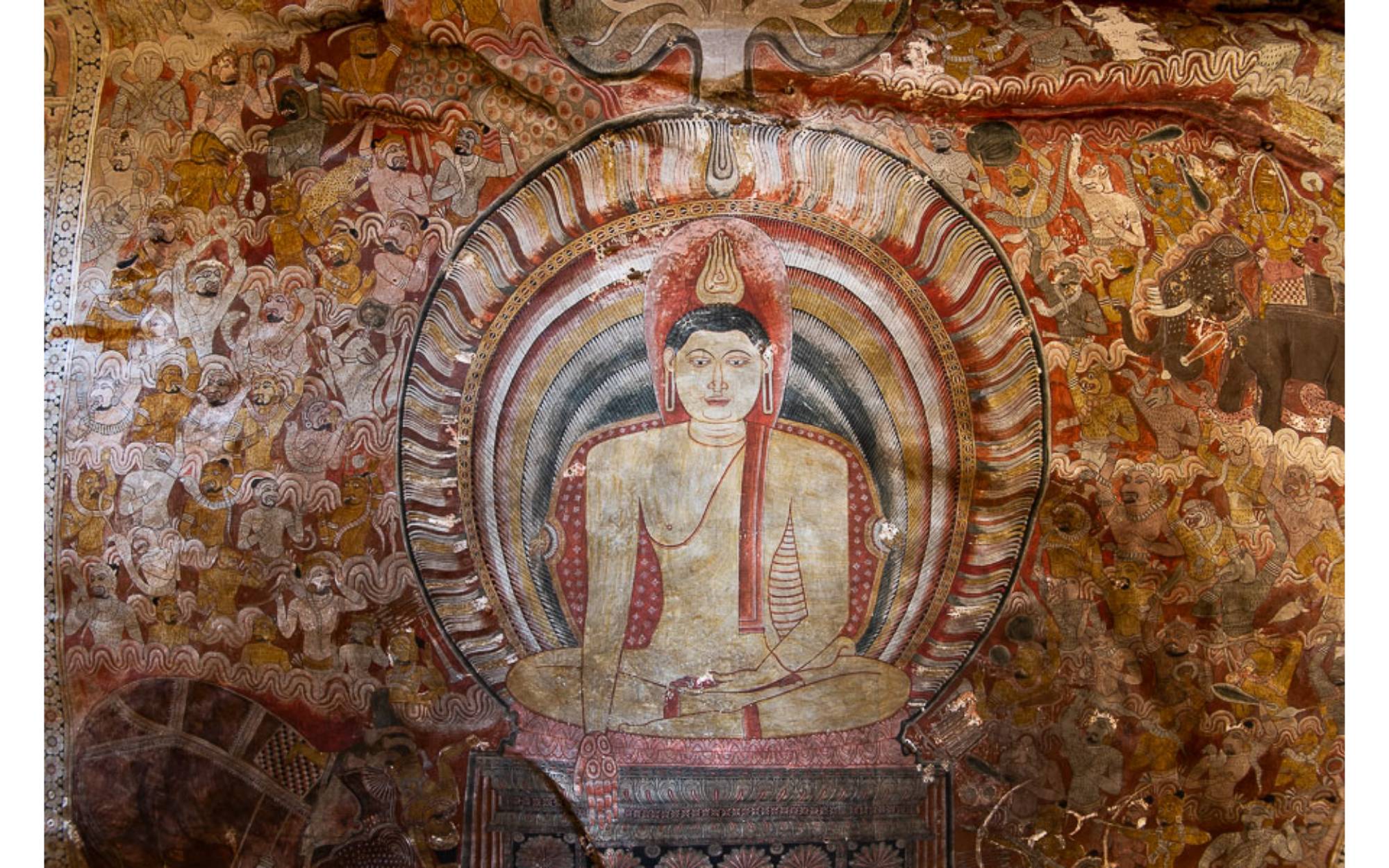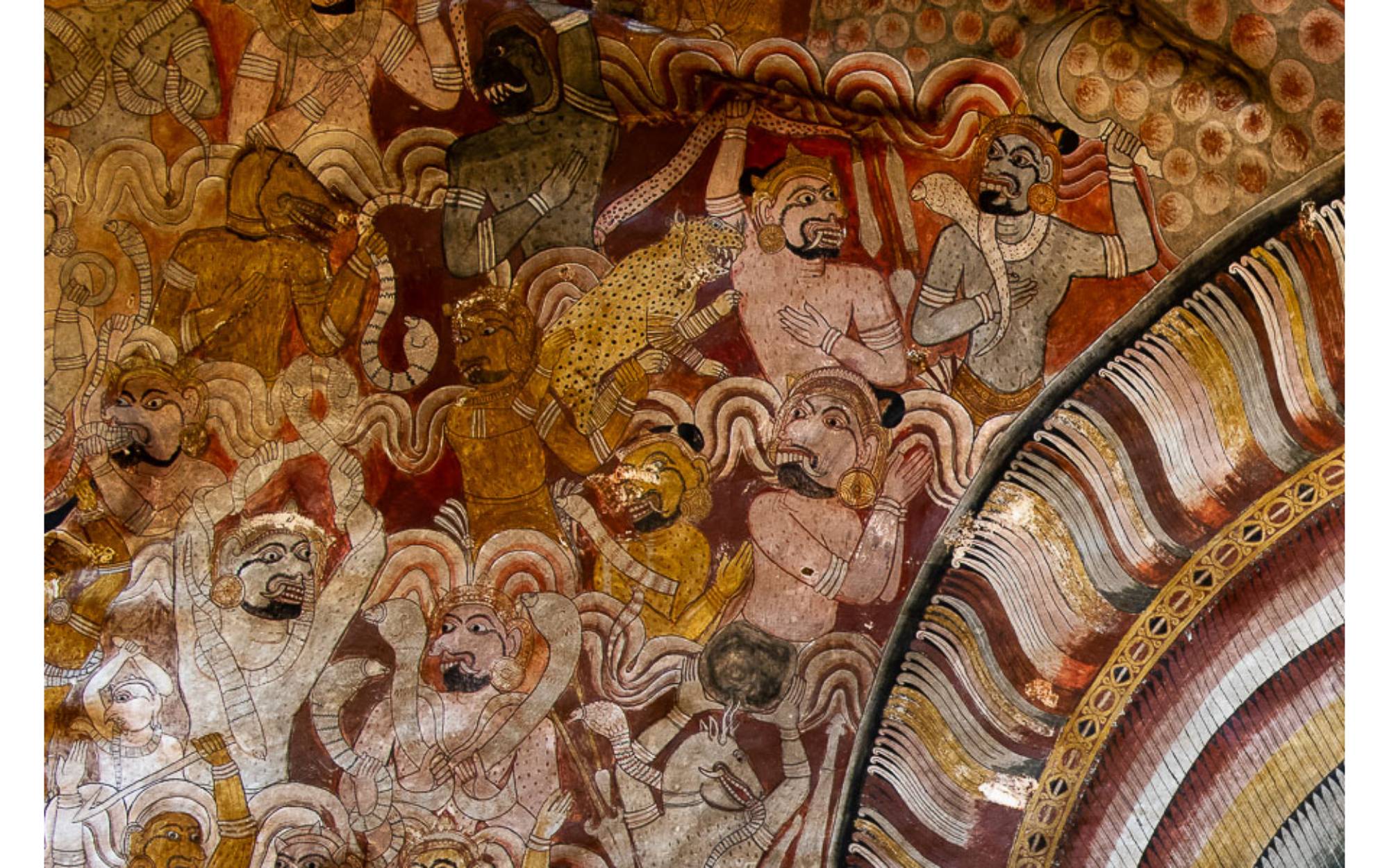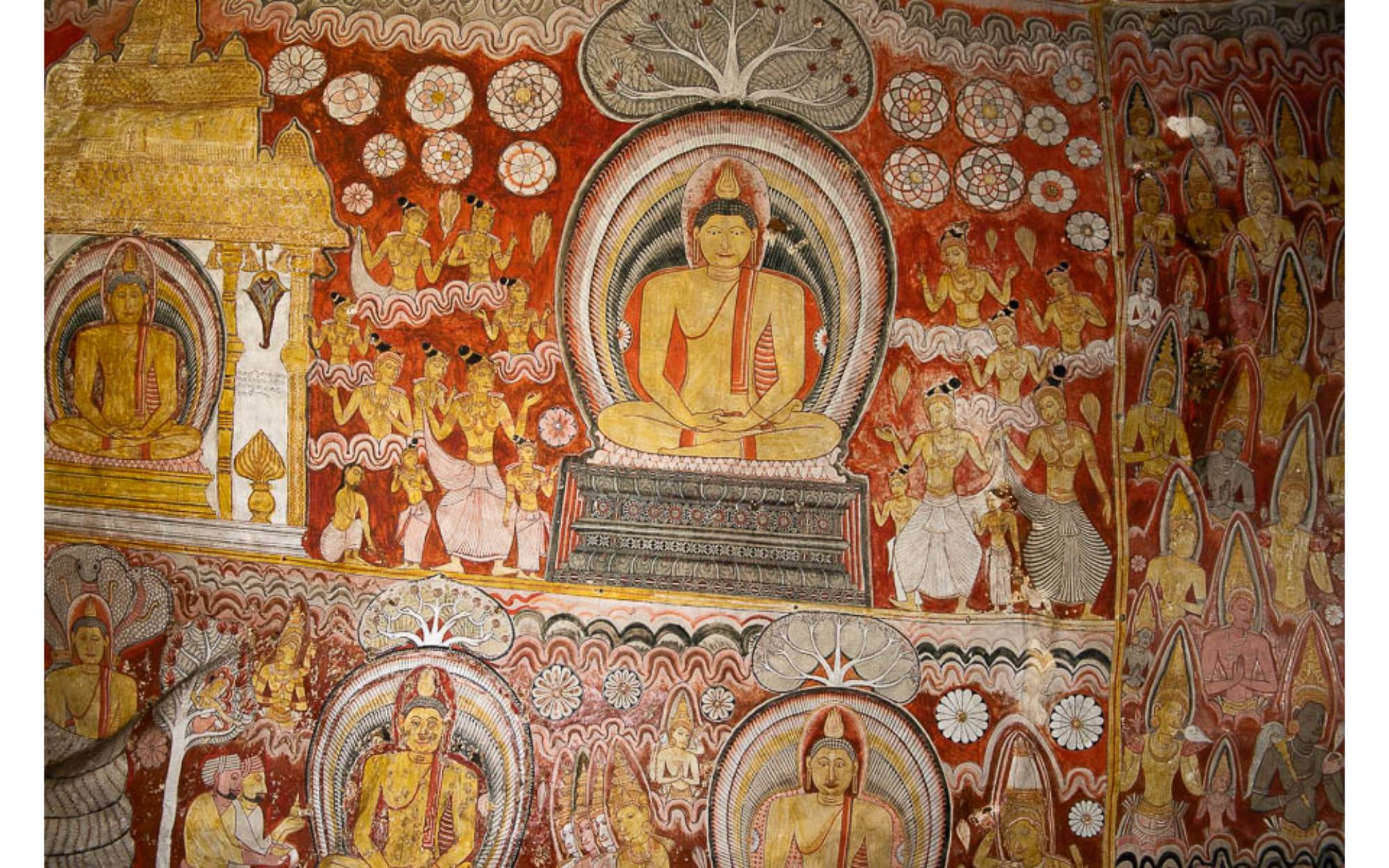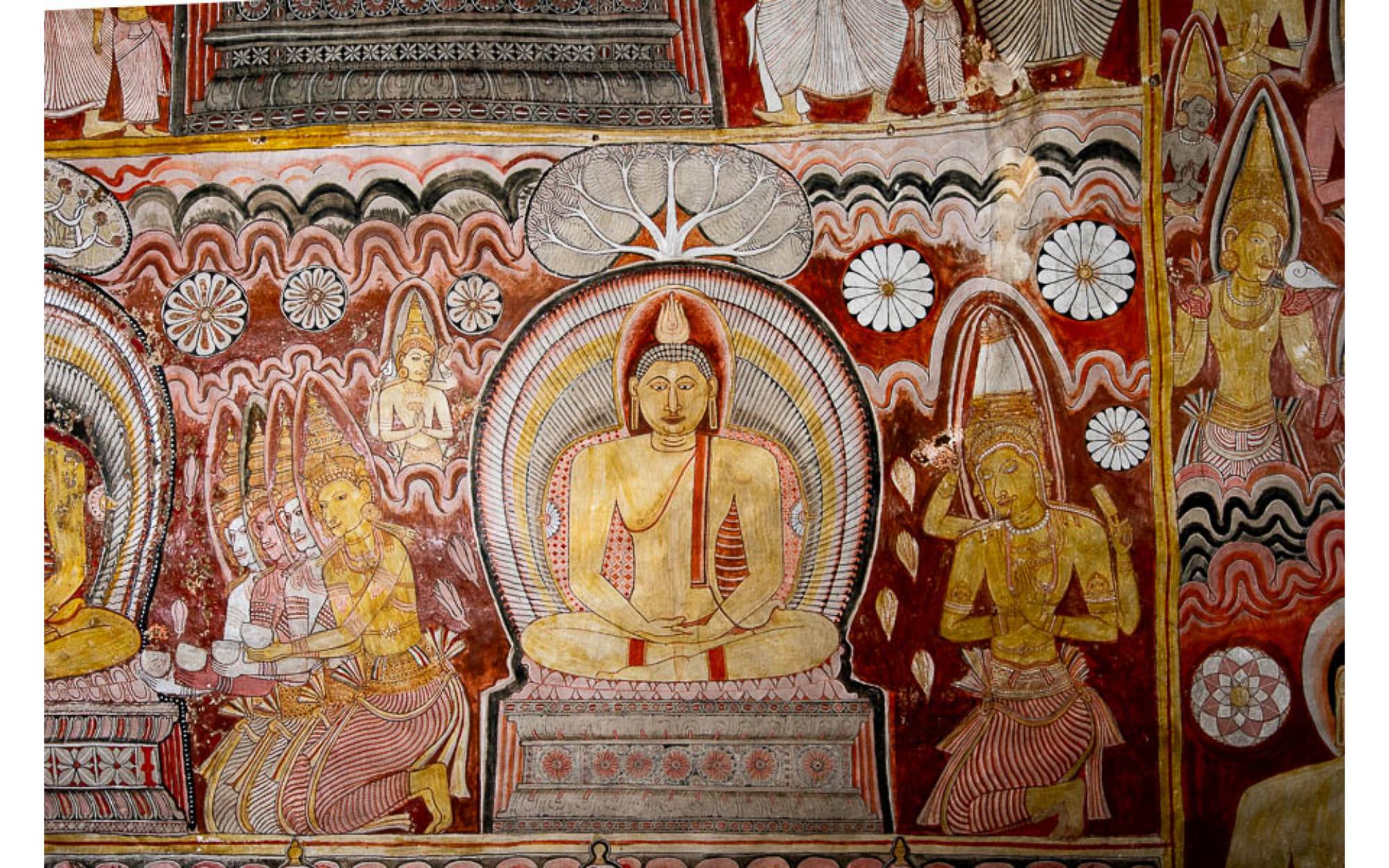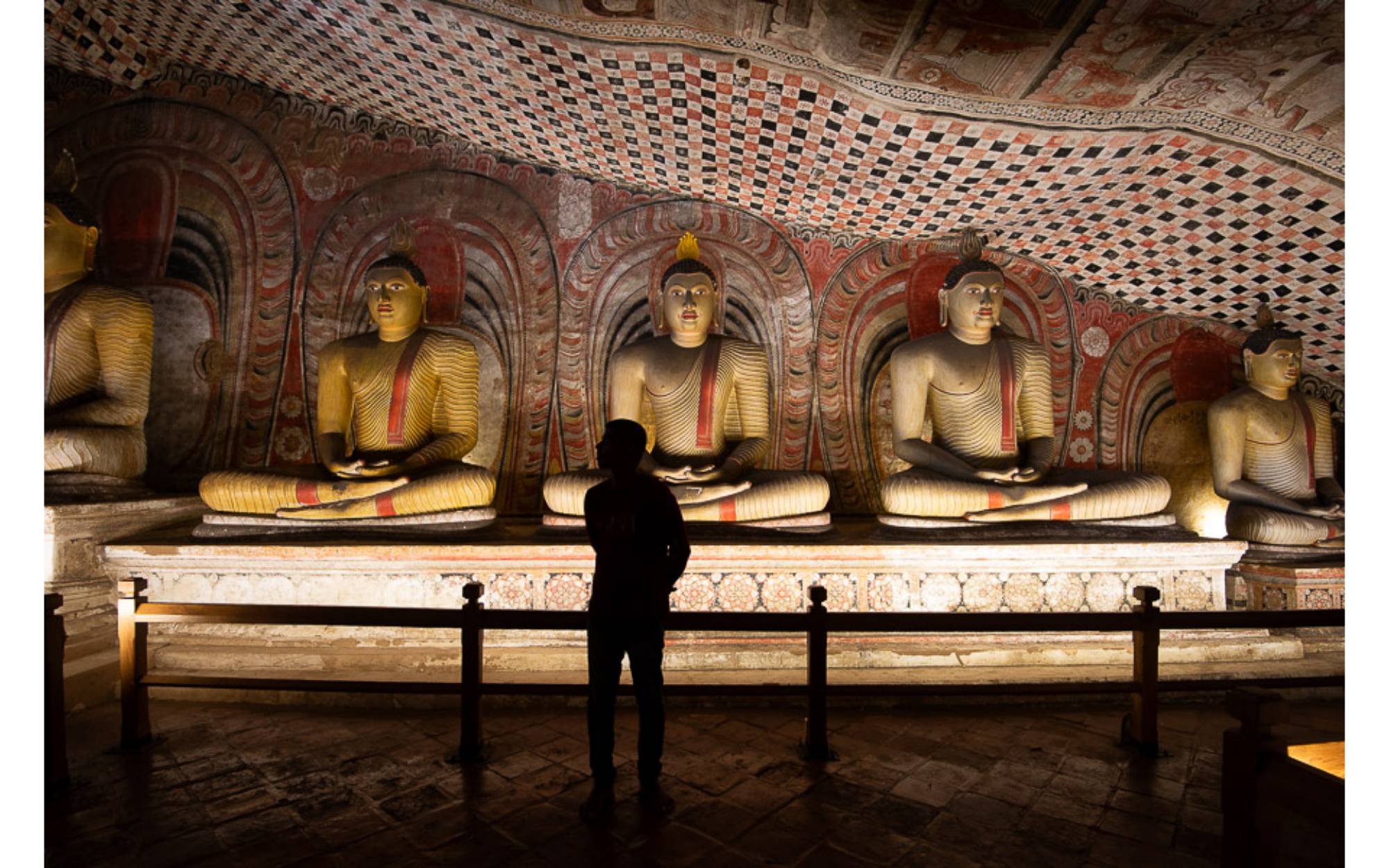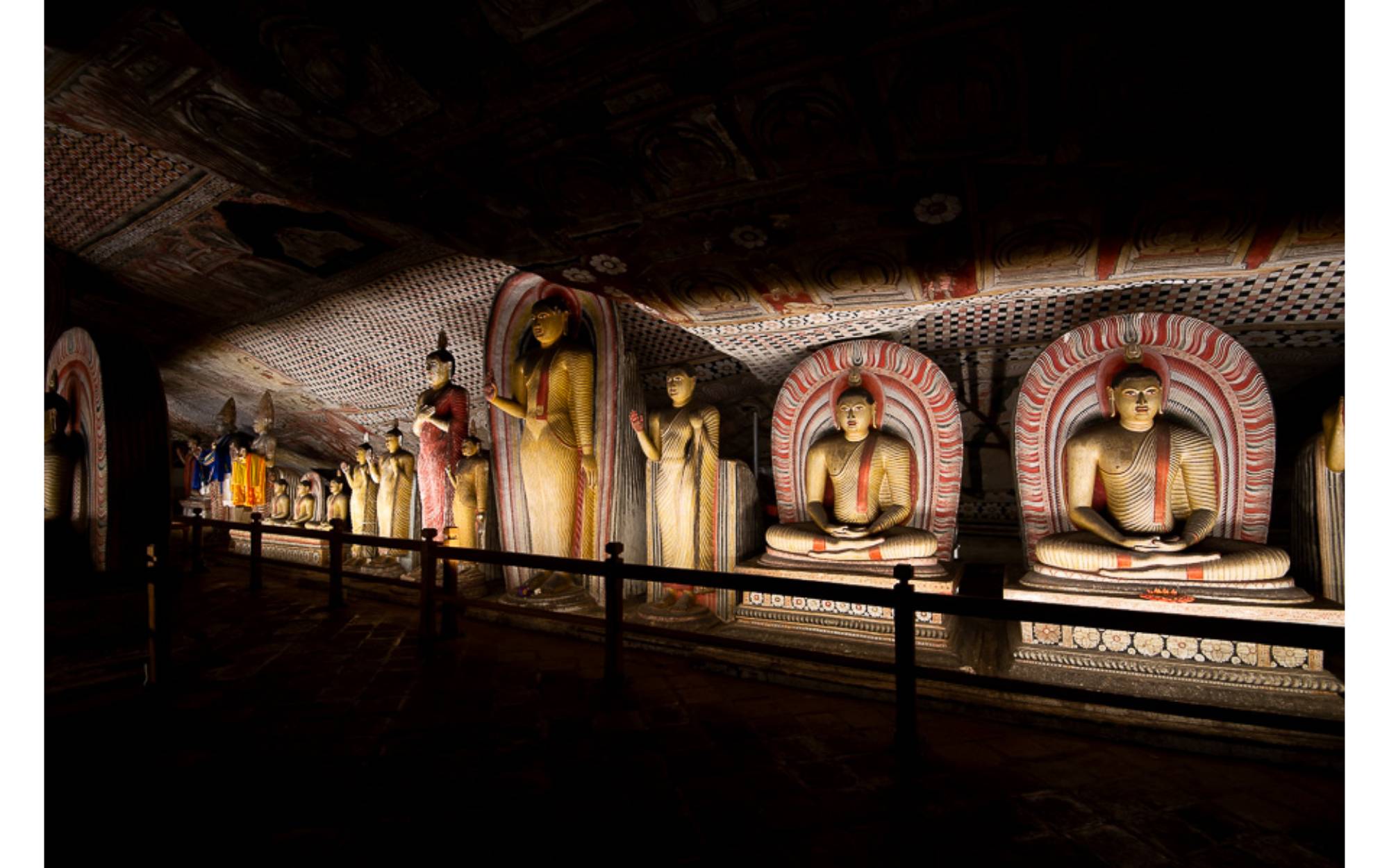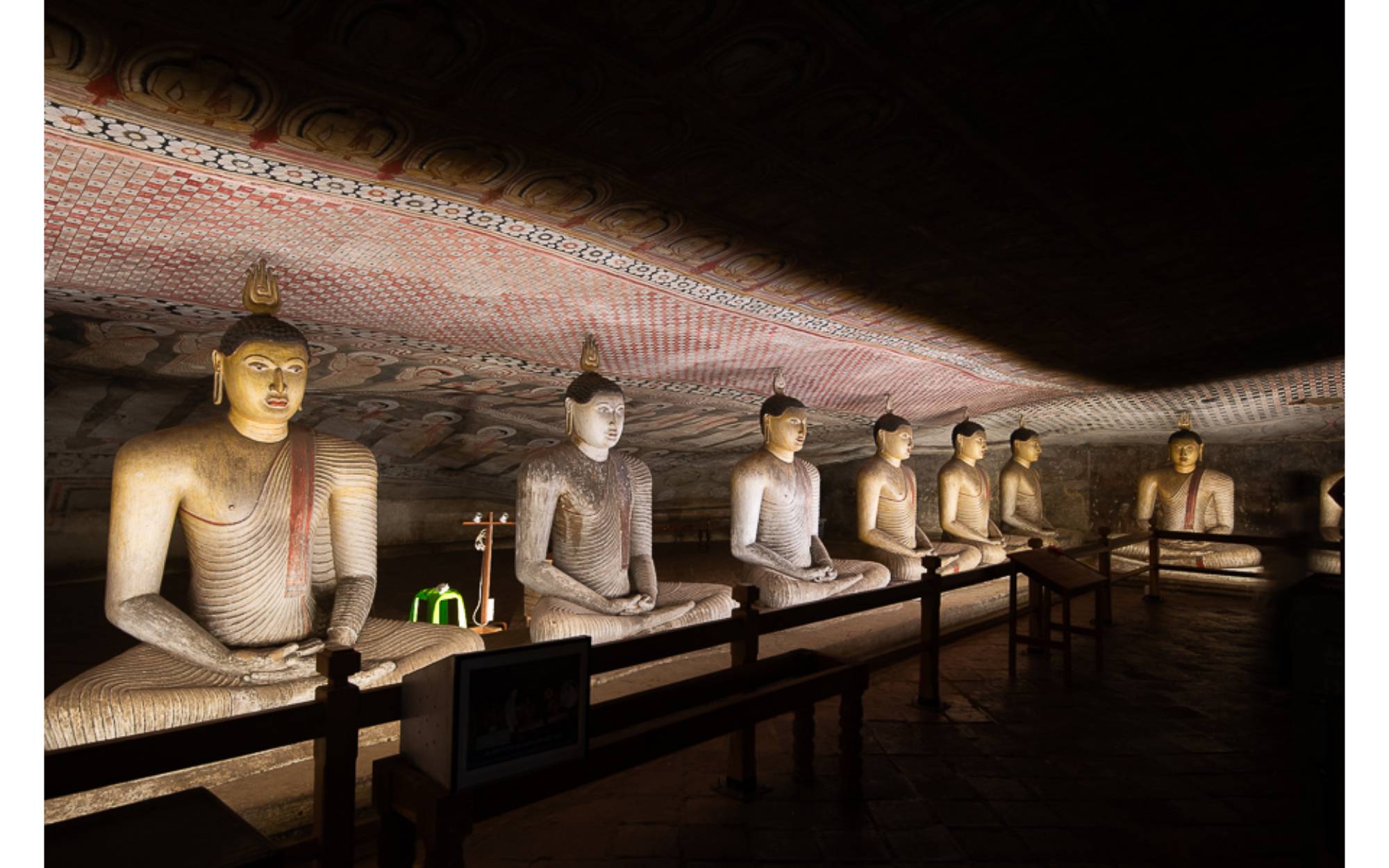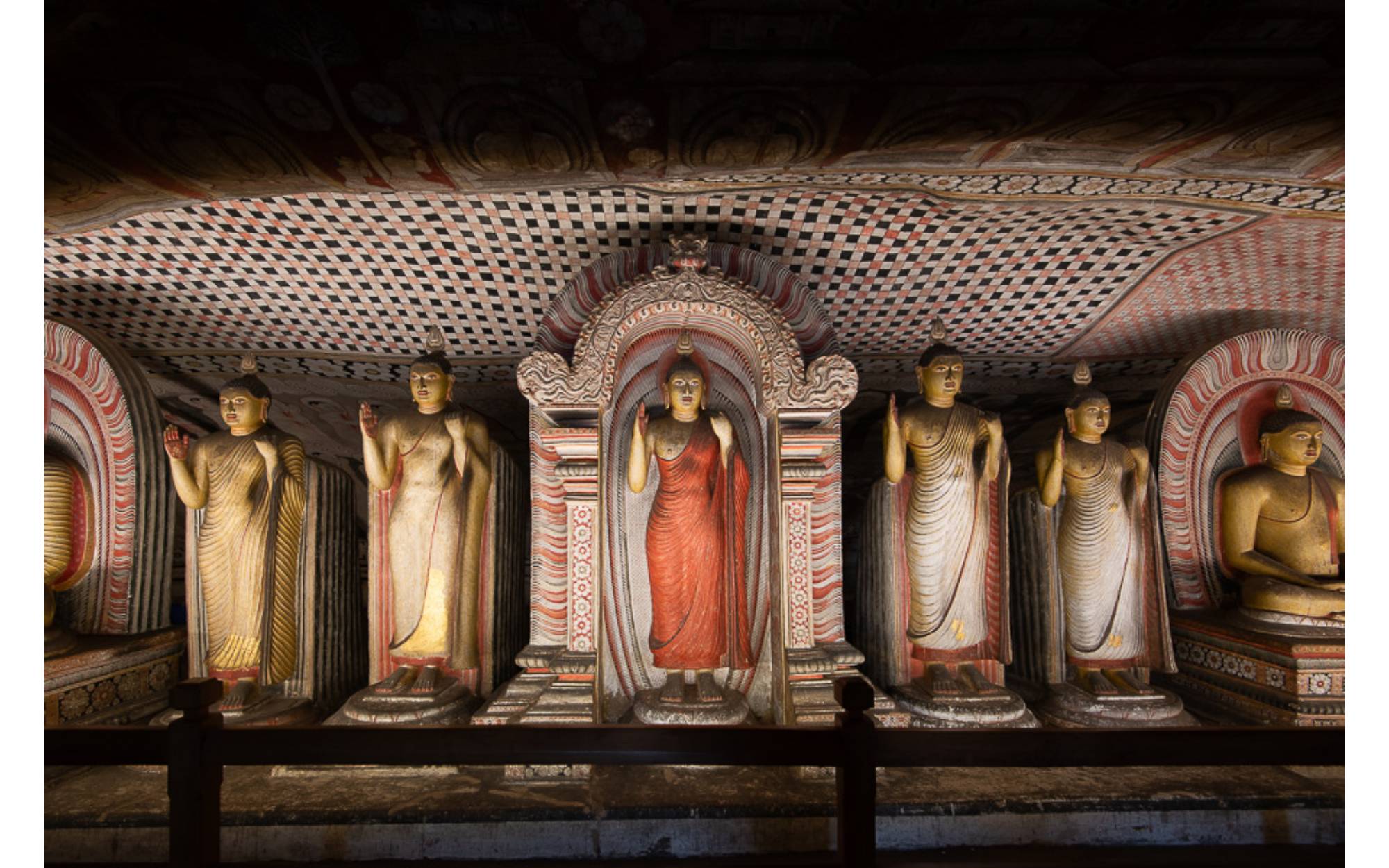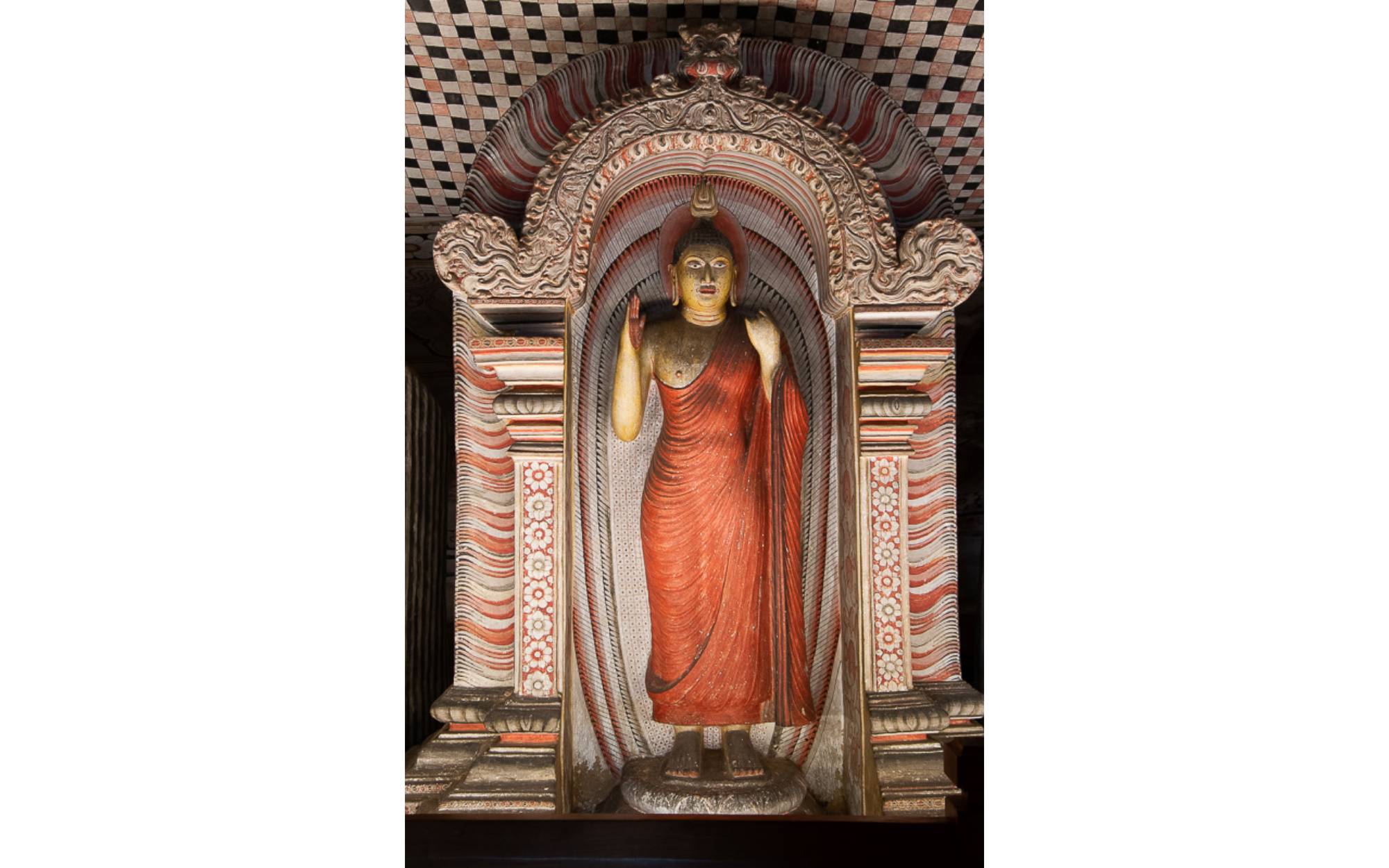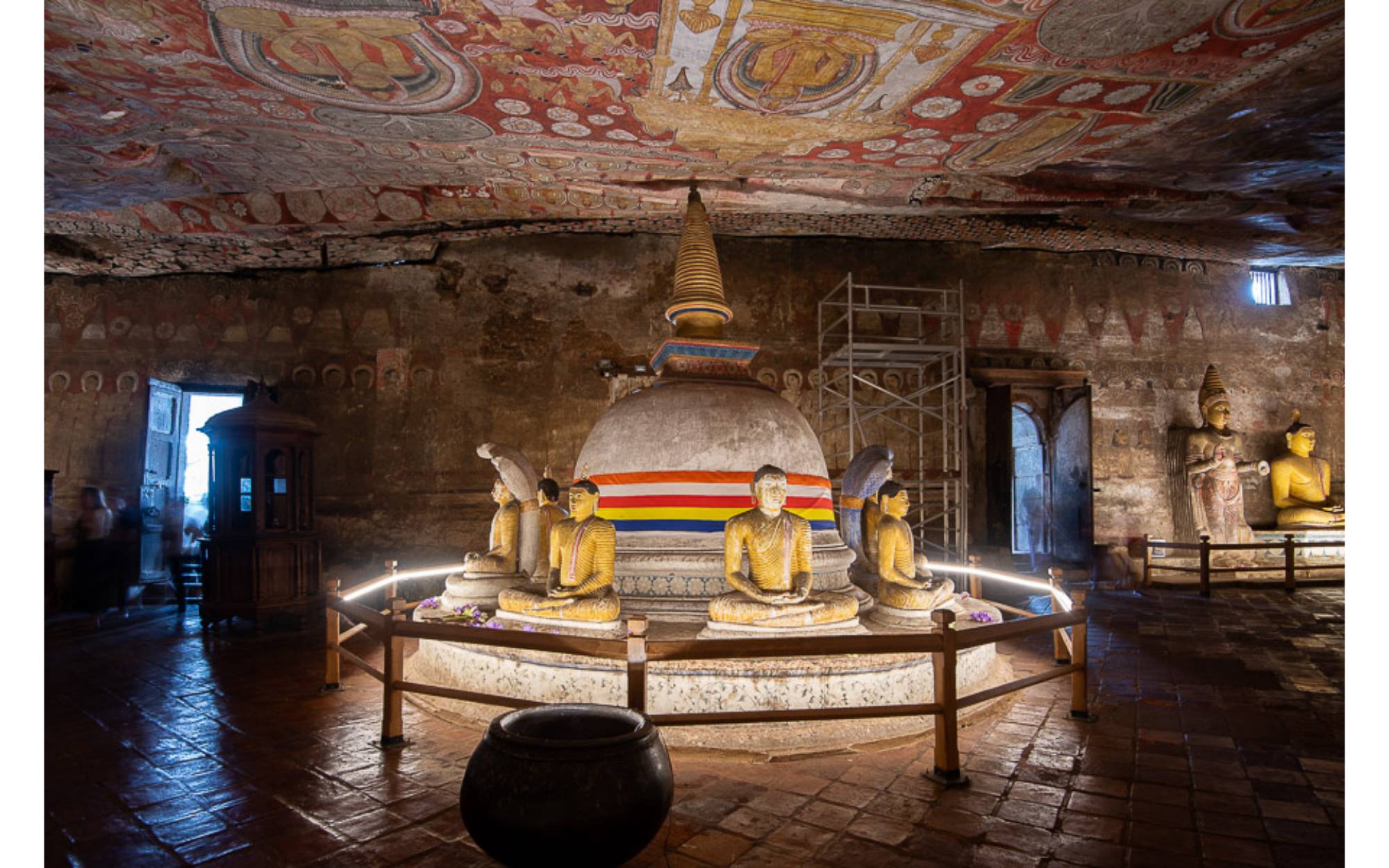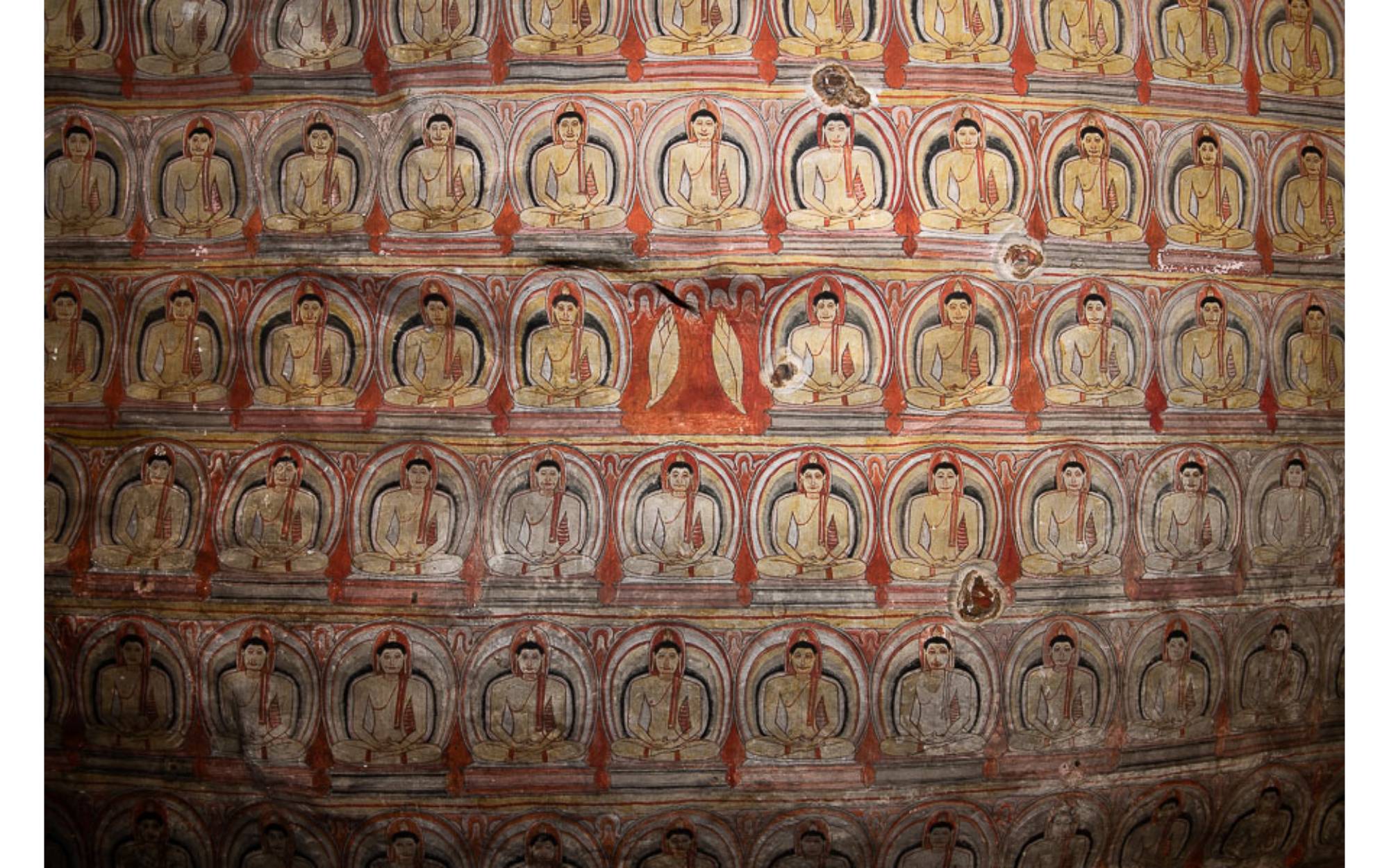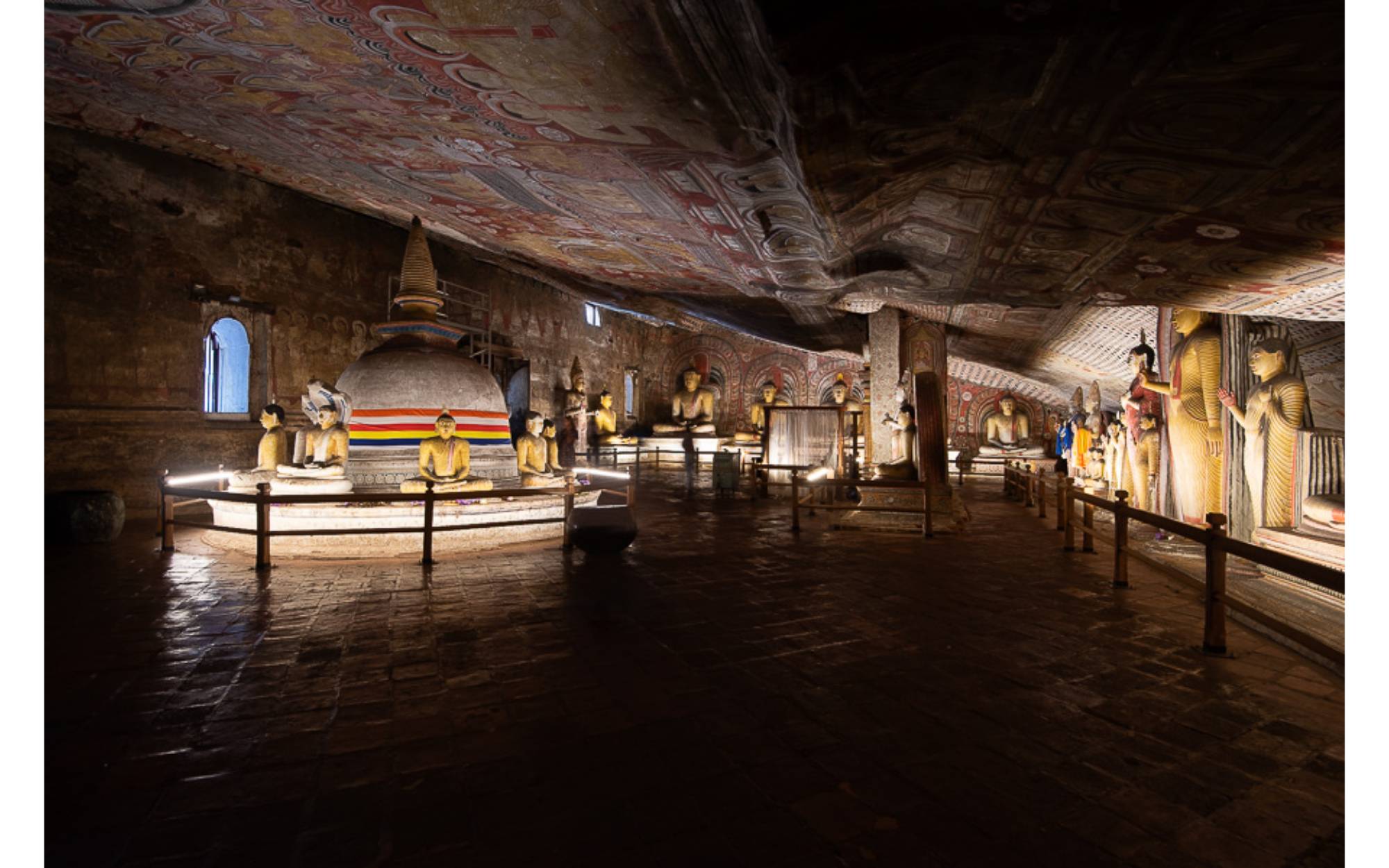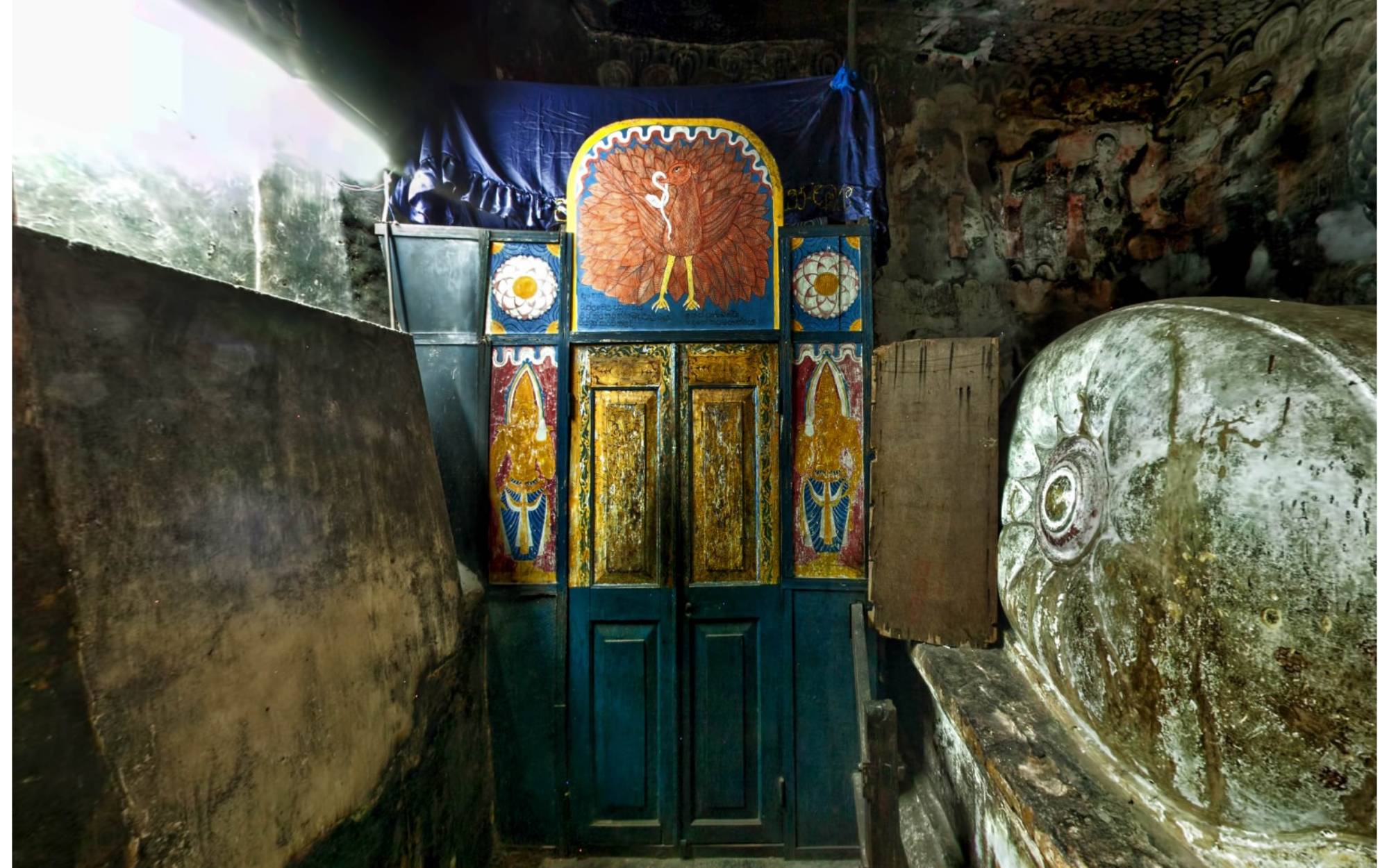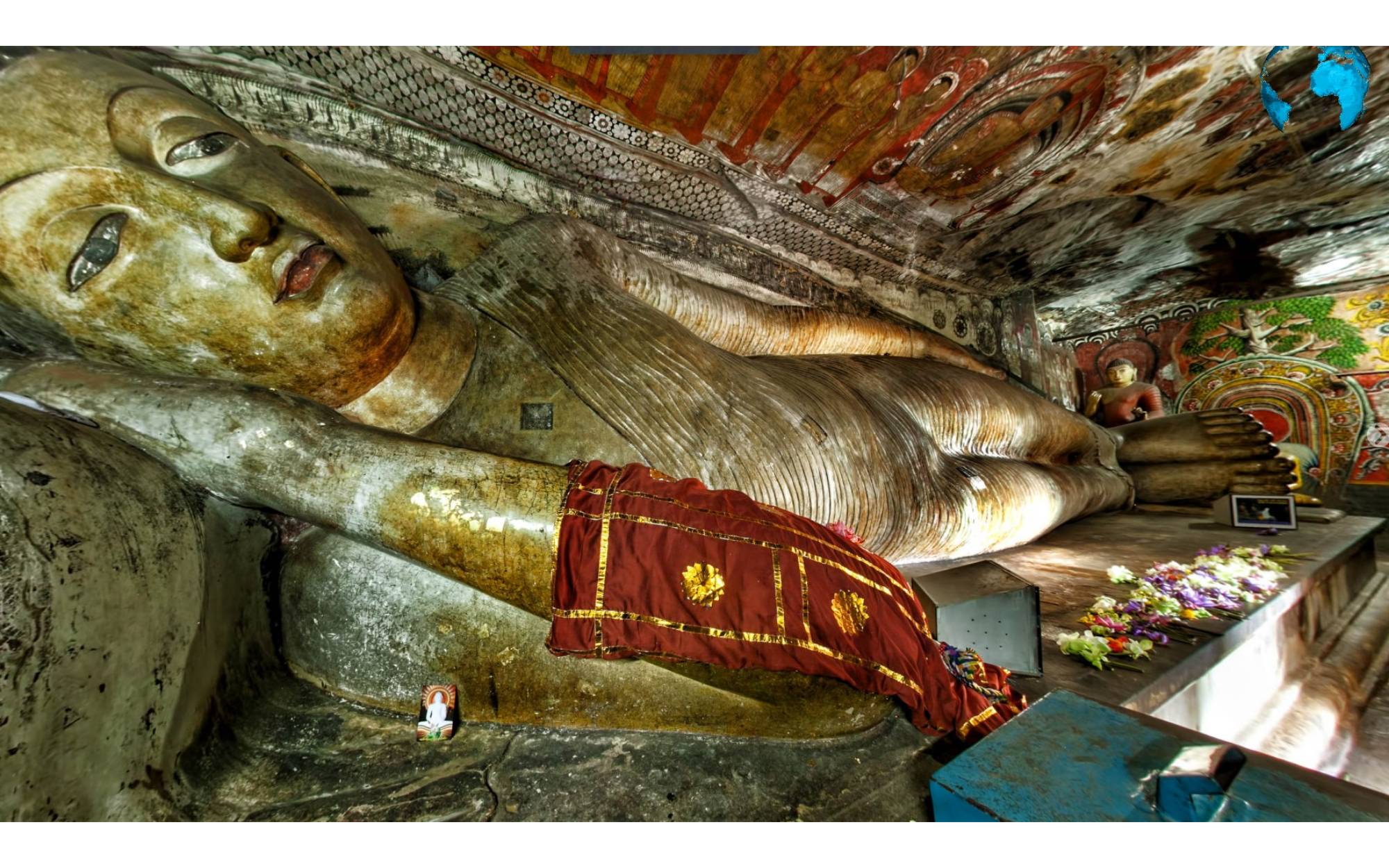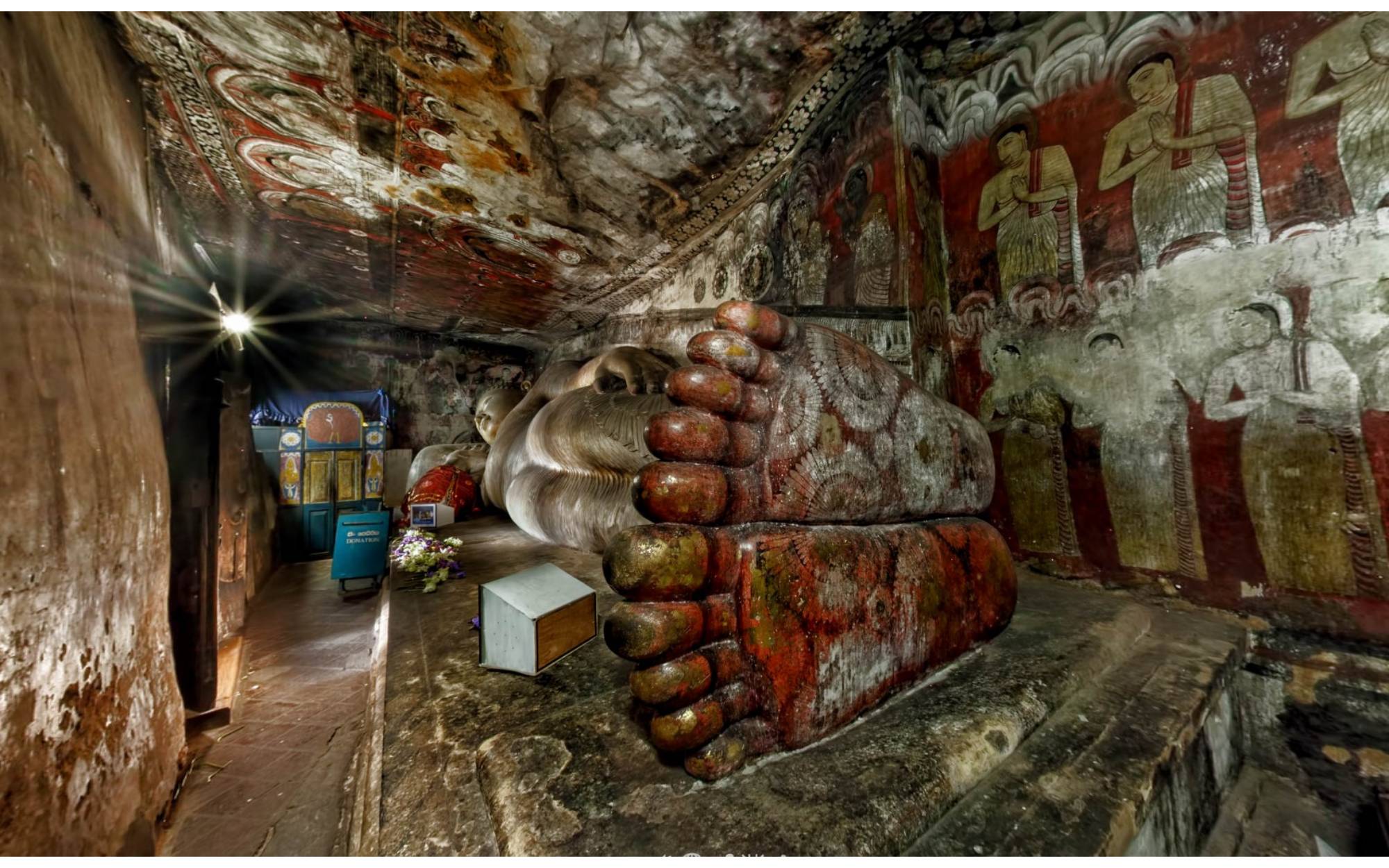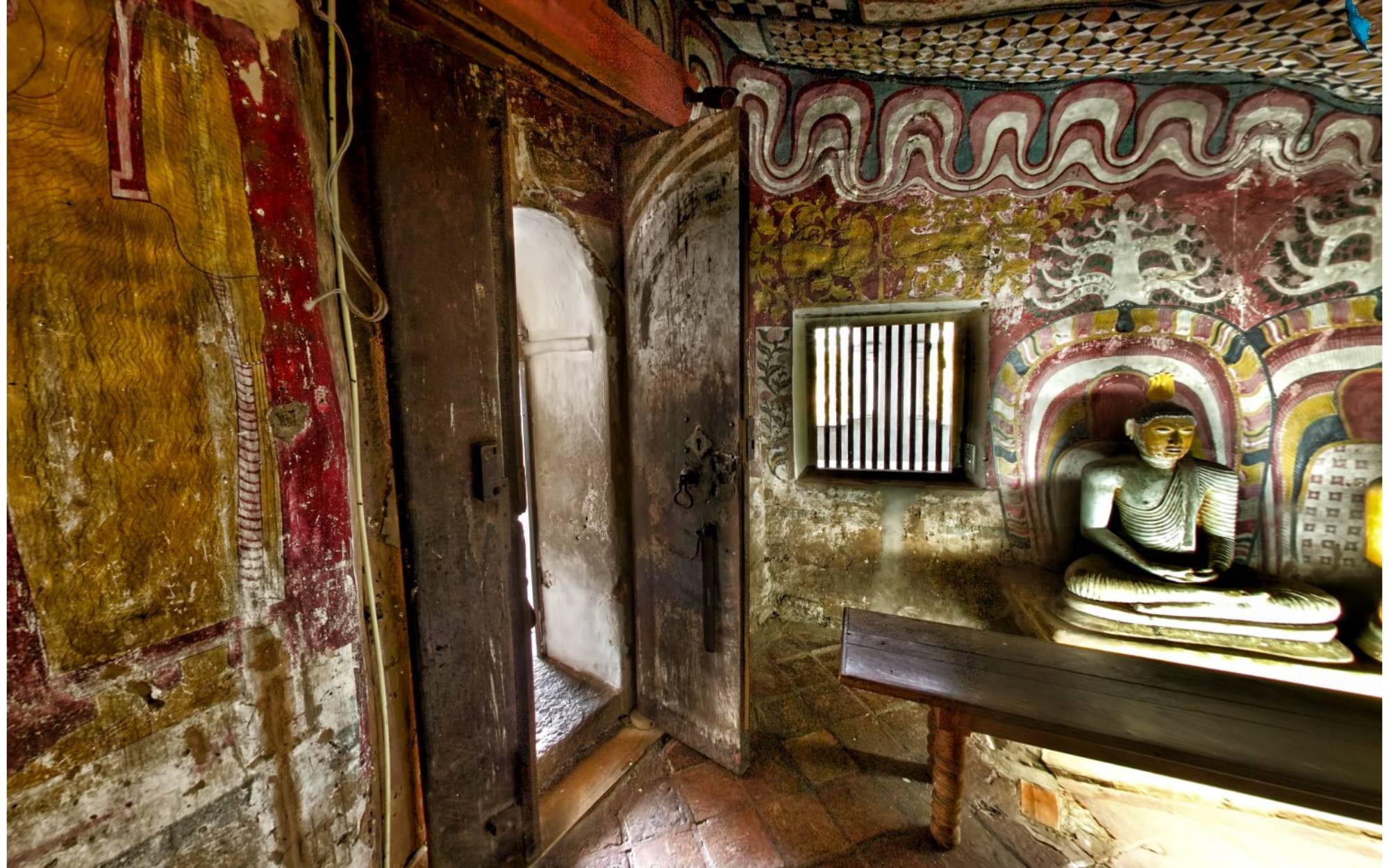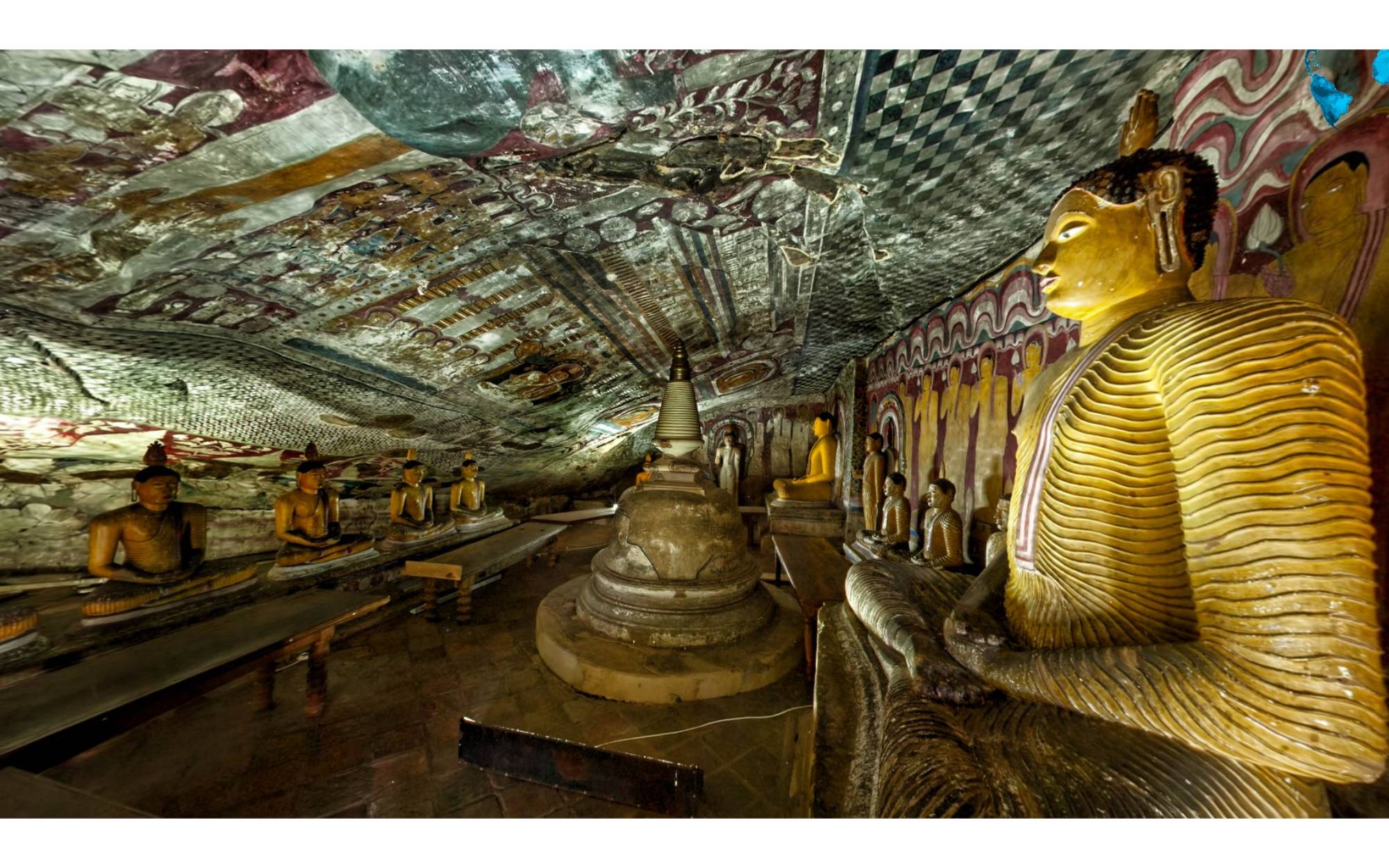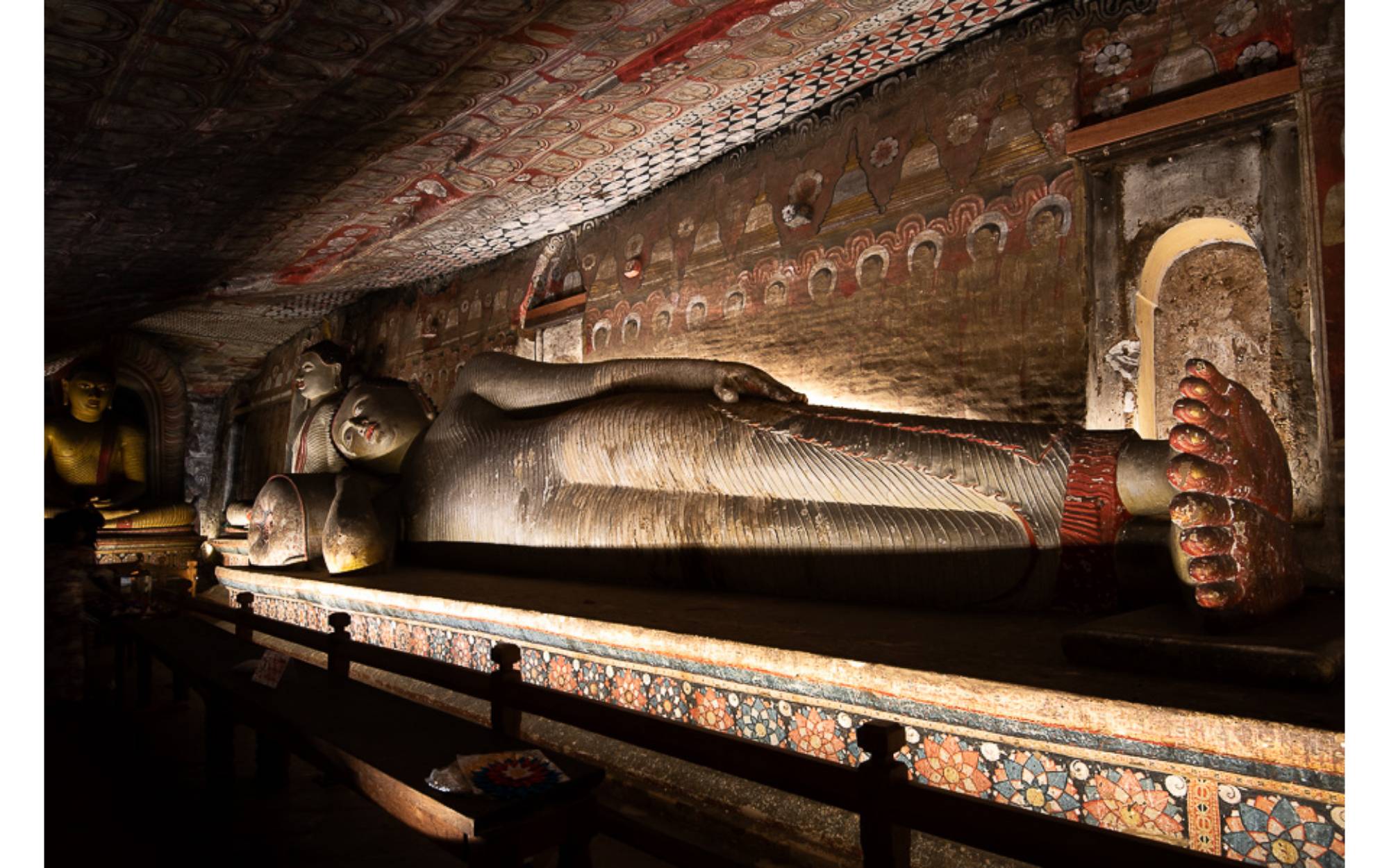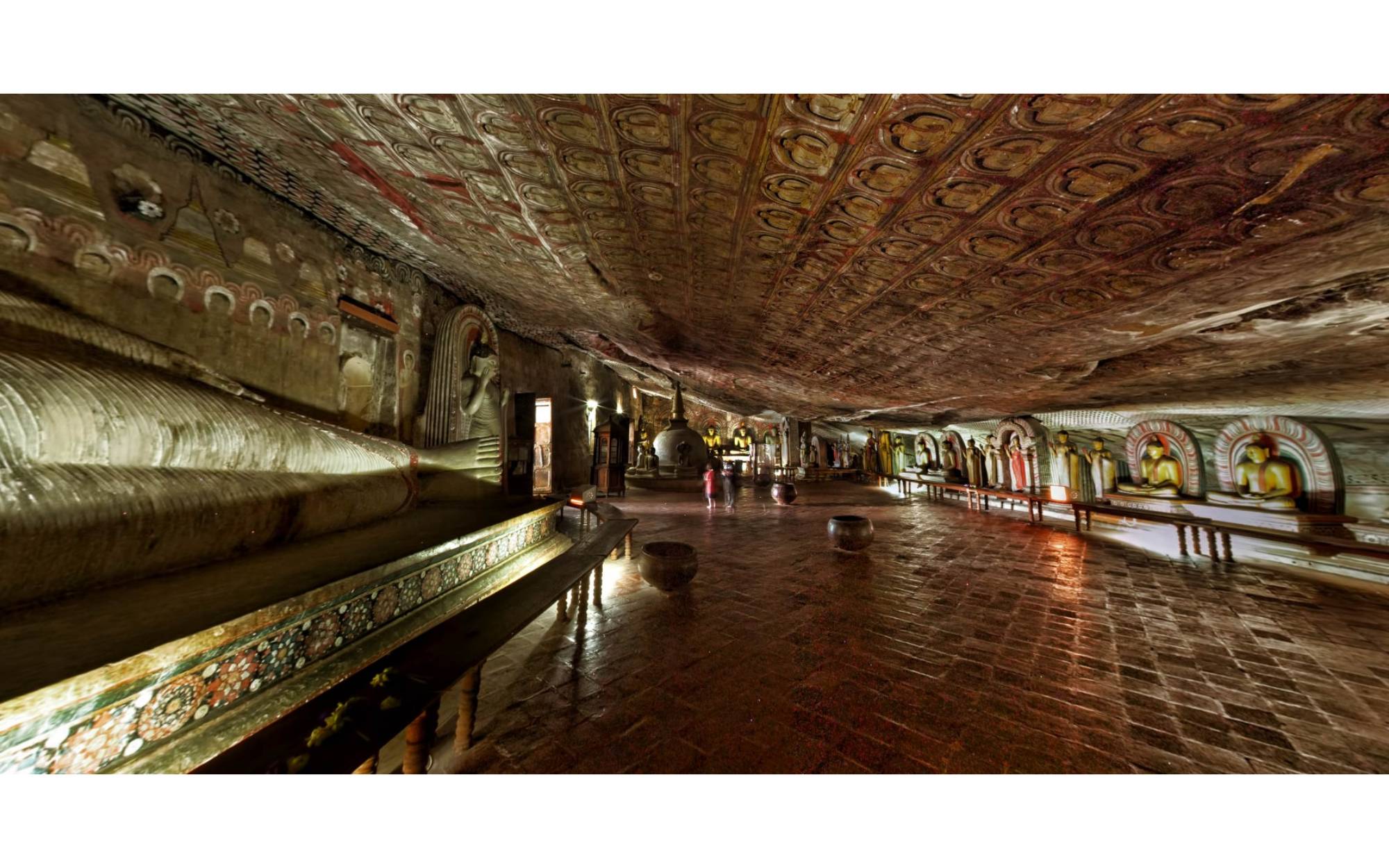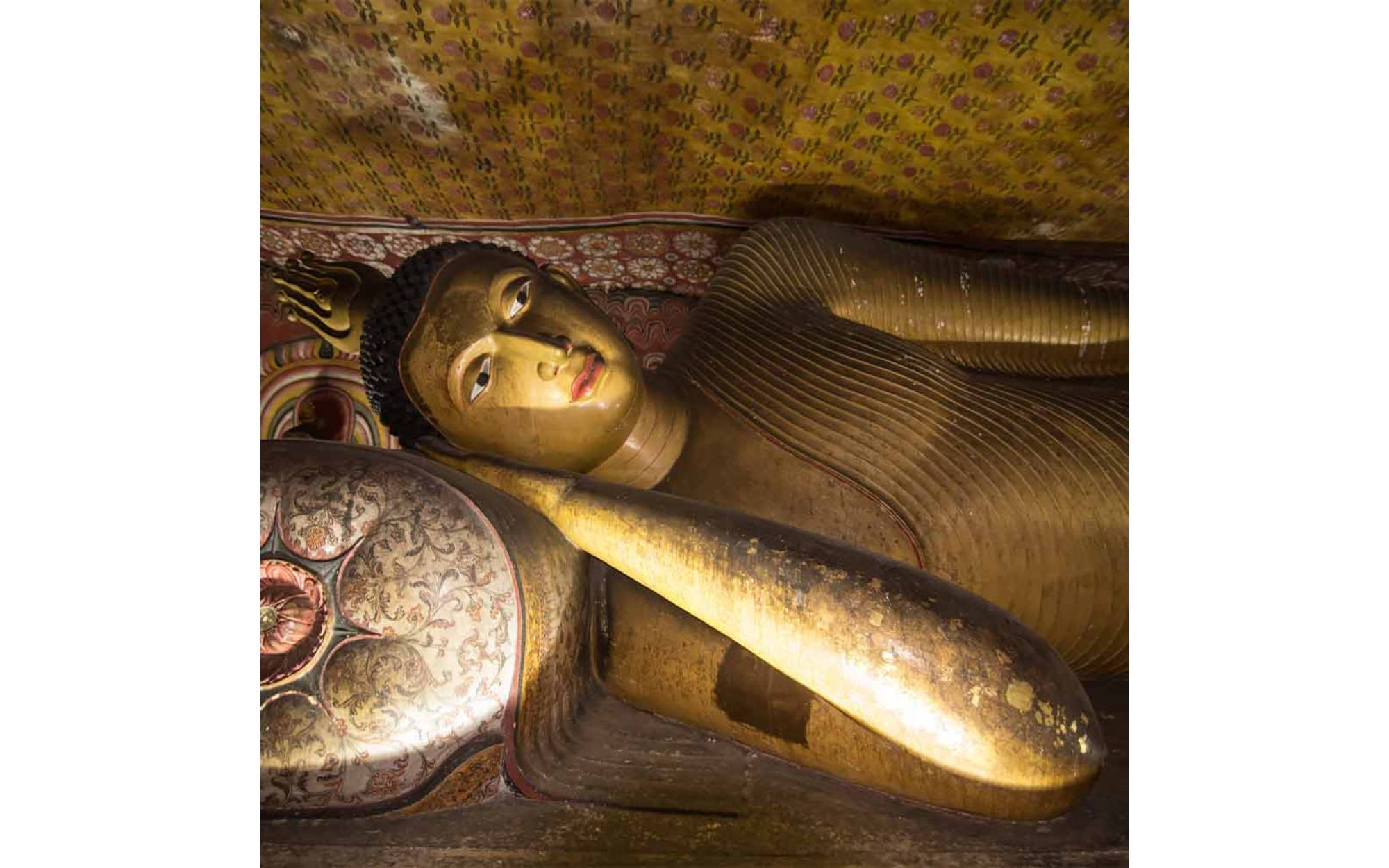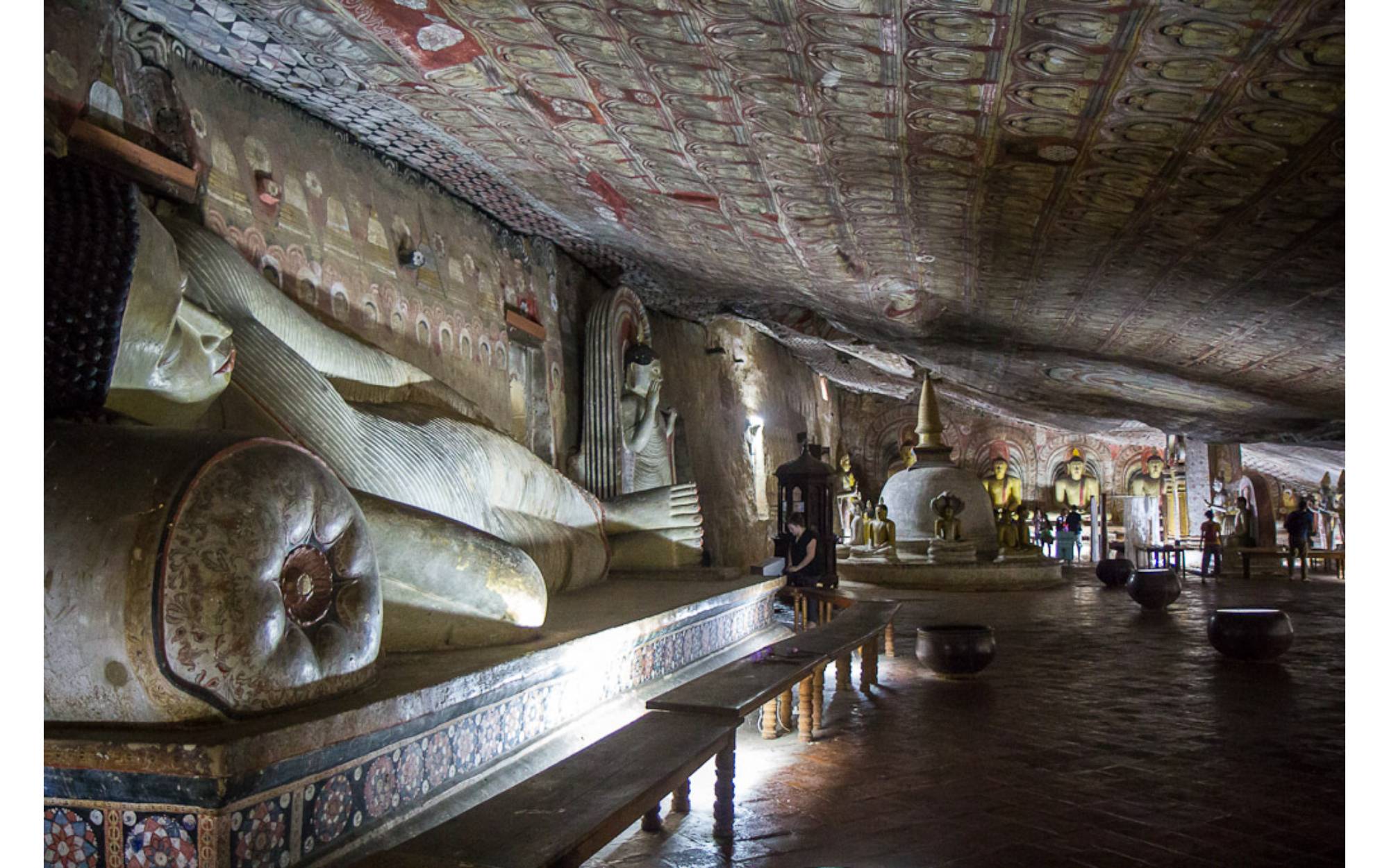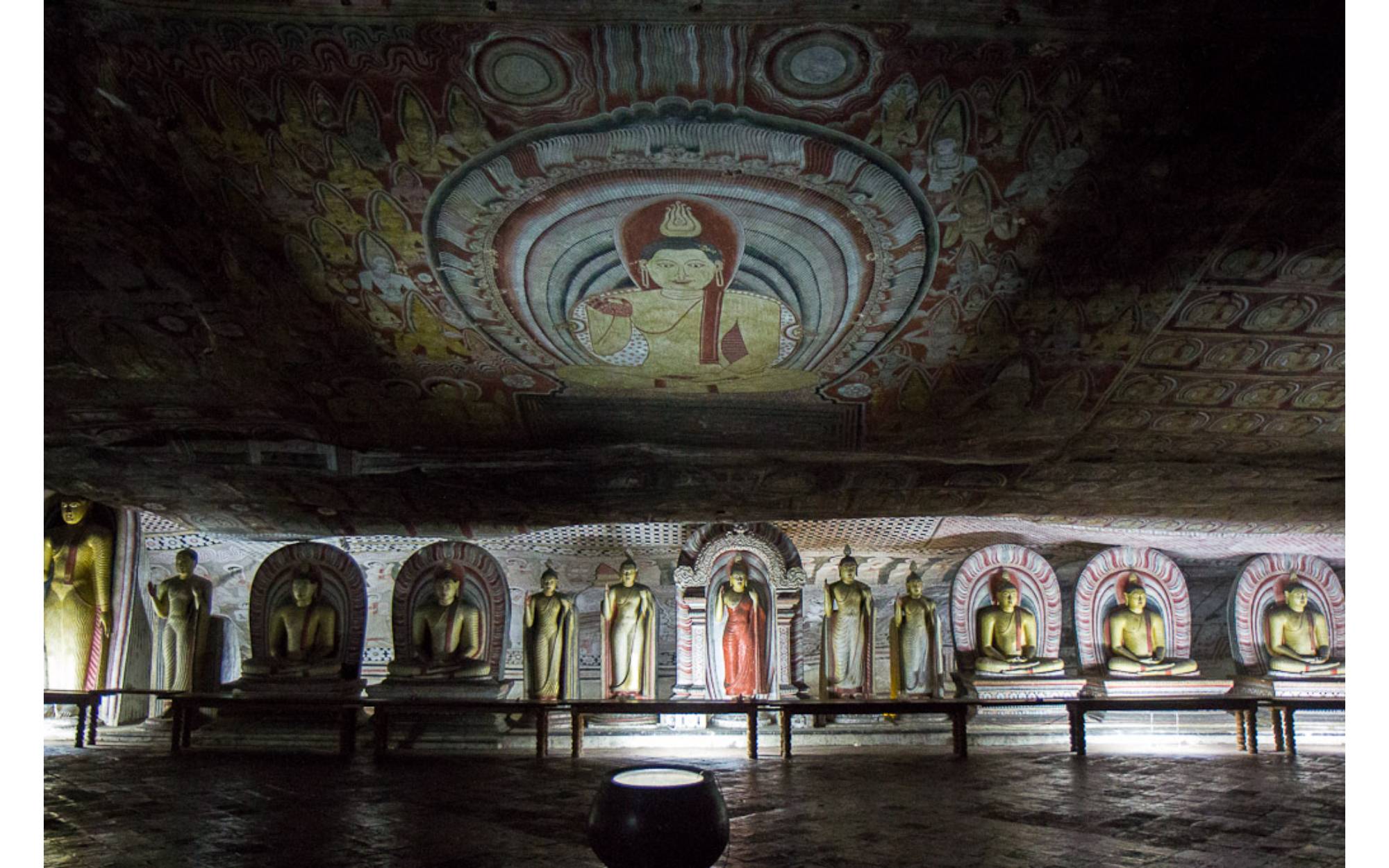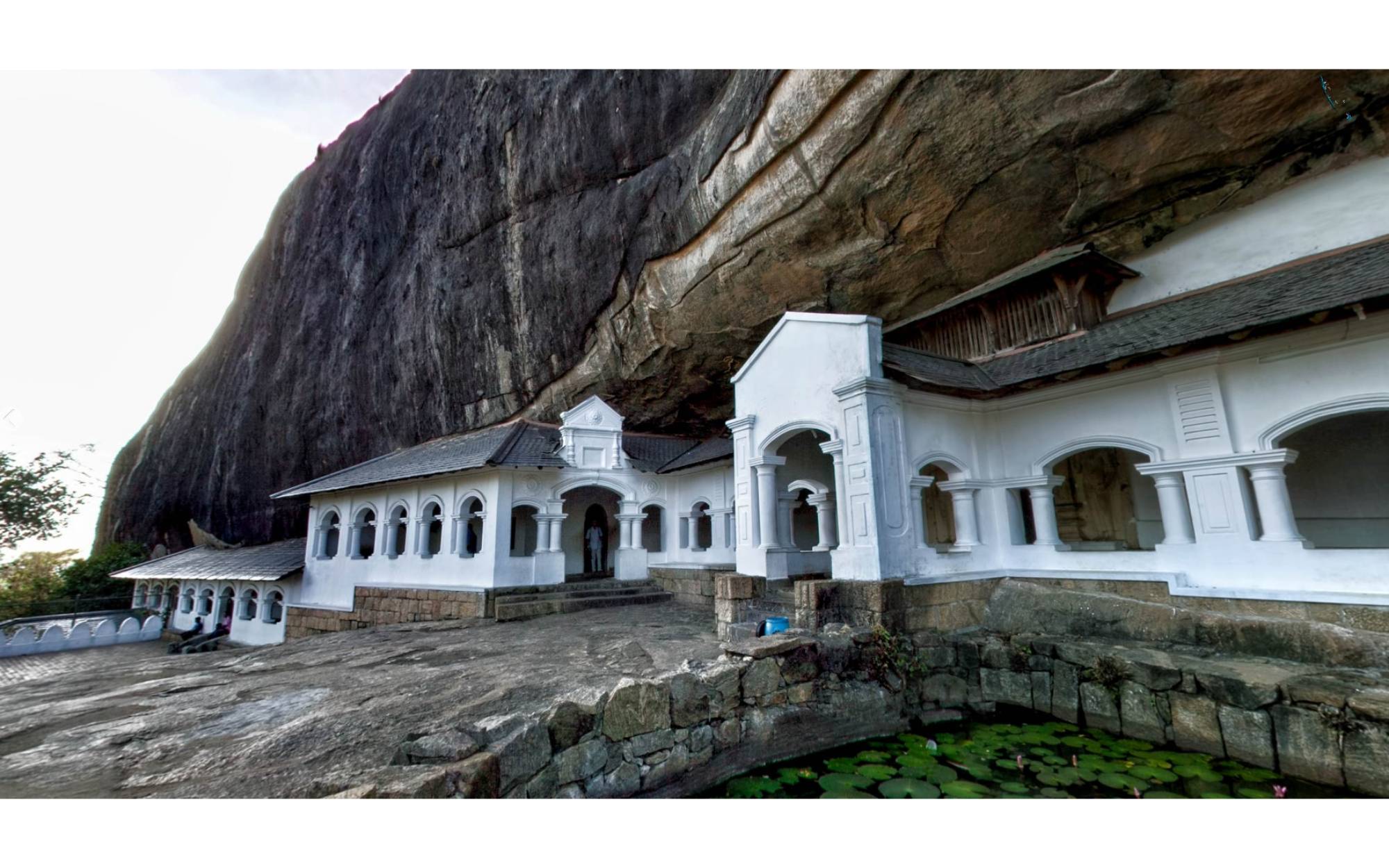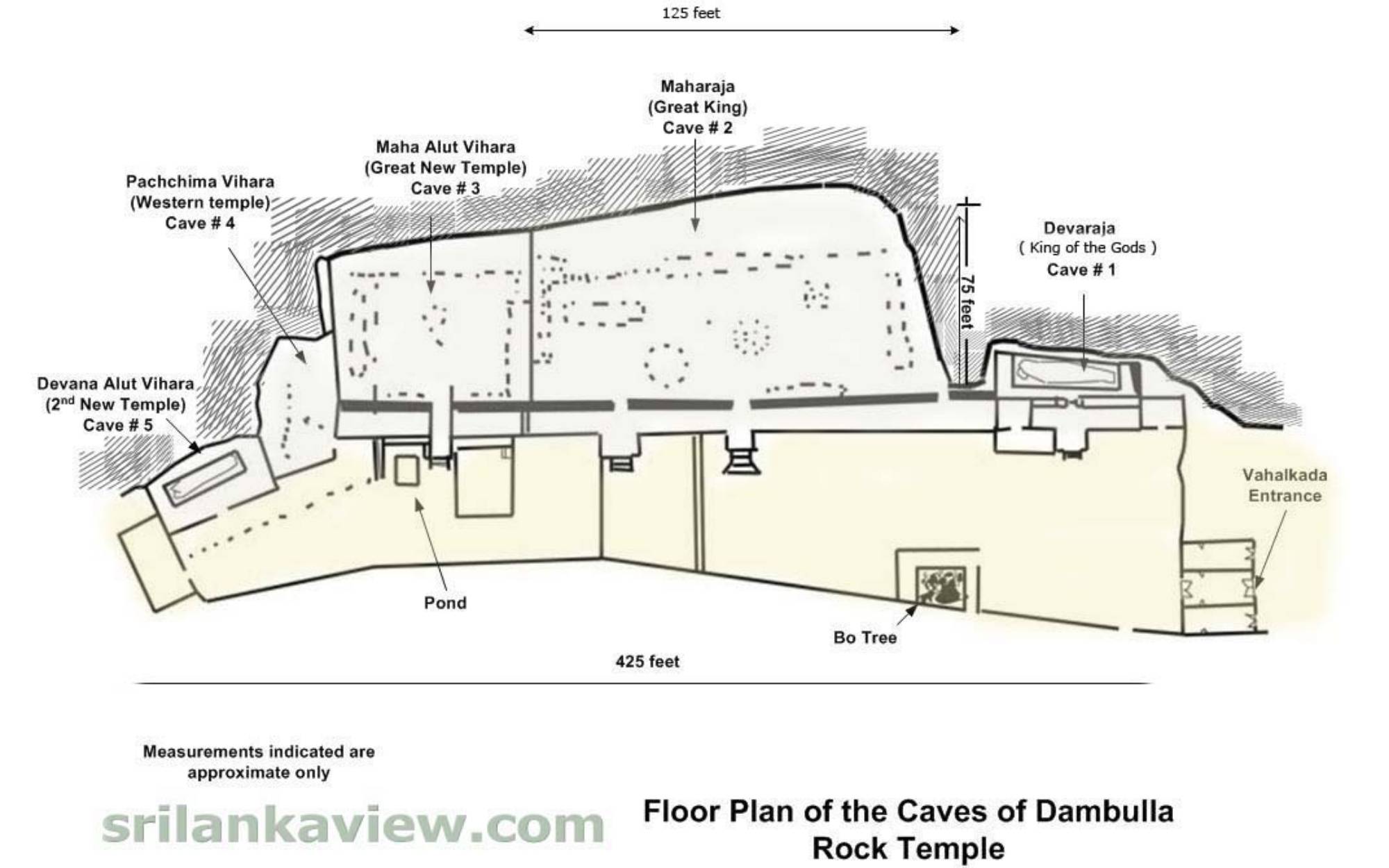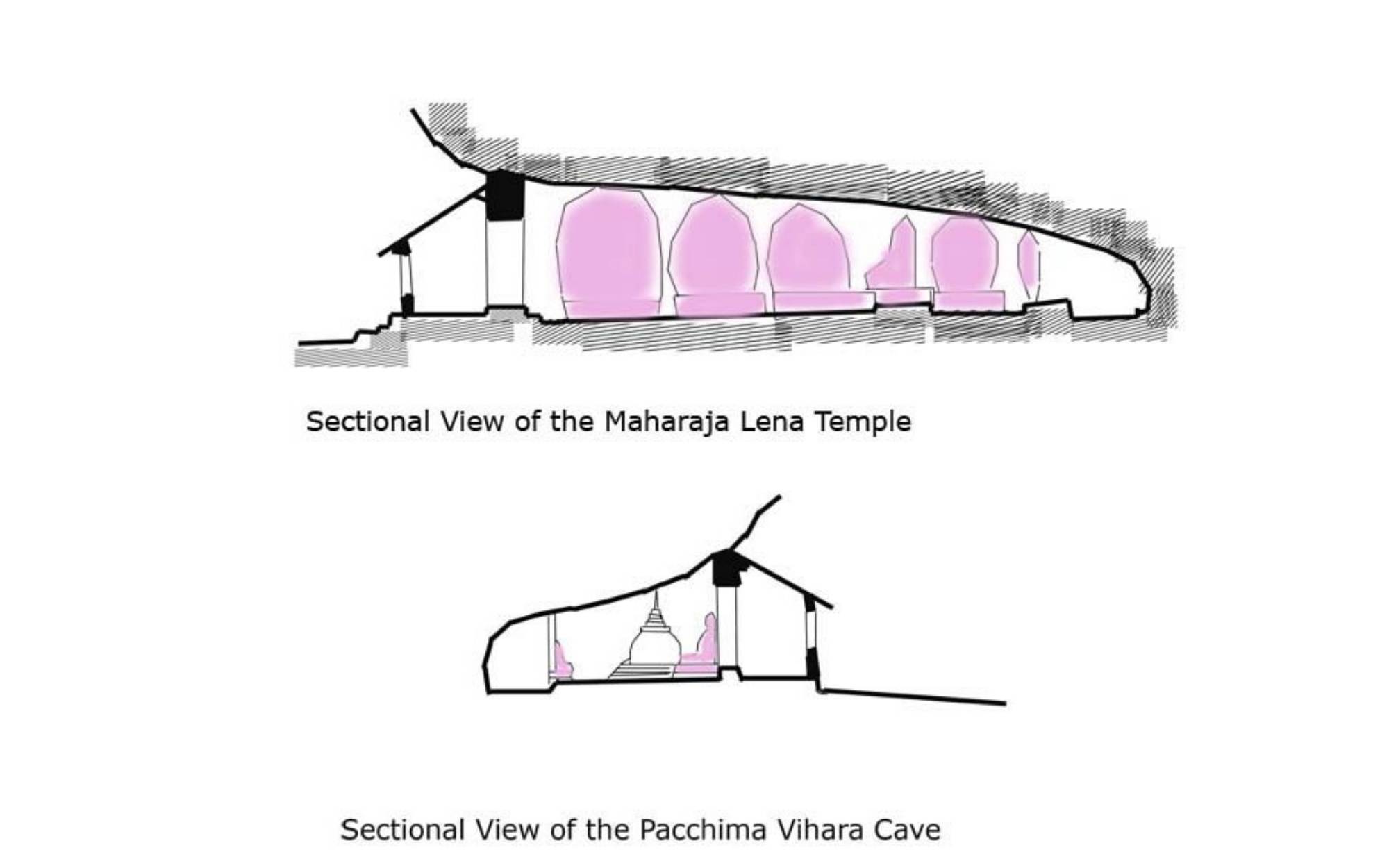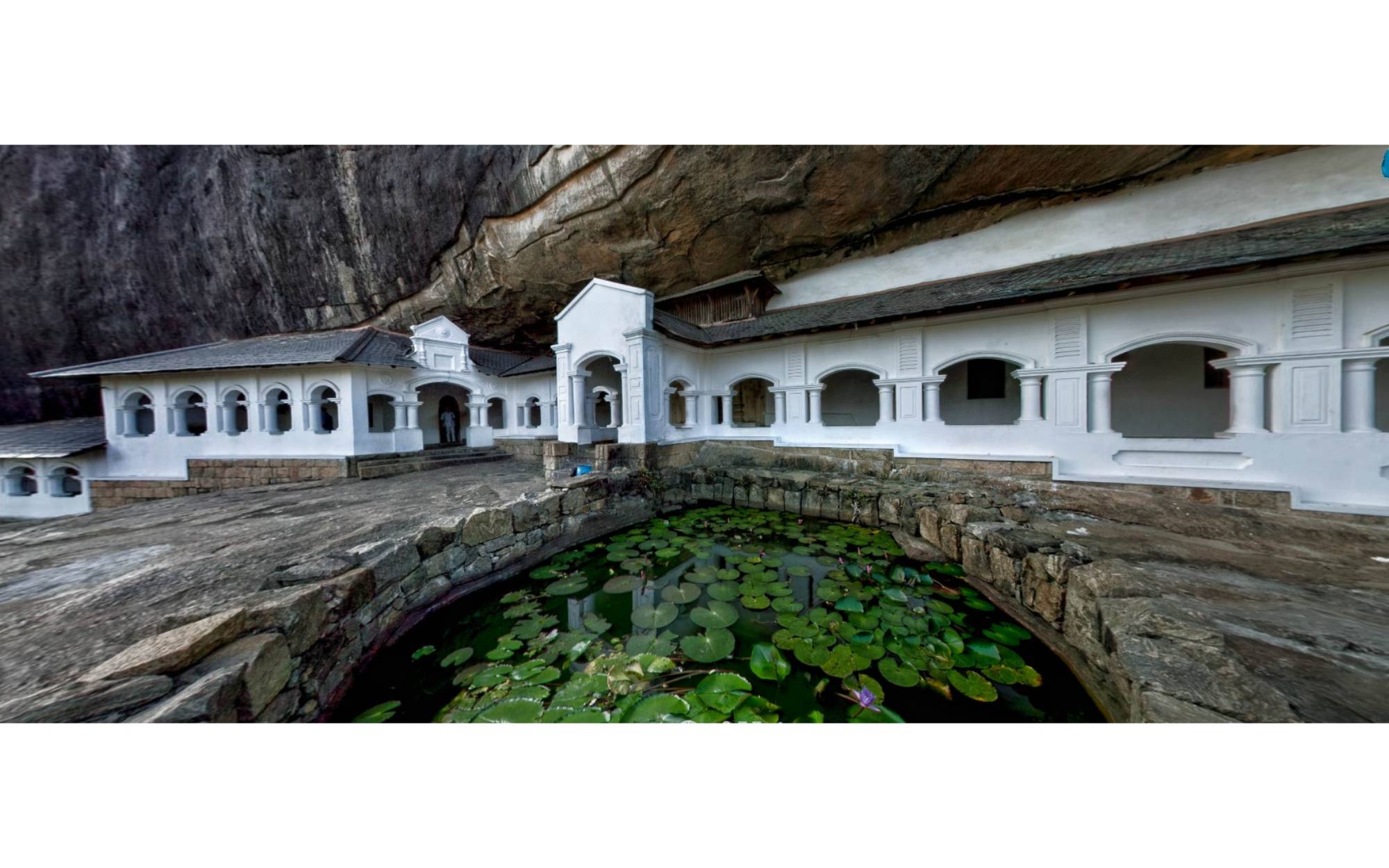The Dambulla Cave Temple
The Dambulla Cave Temple, Dambulla
Dambulla Cave Temple: Sri Lanka’s Sanctuary in Stone
Rising from Sri Lanka’s dry plains, the golden rock of Dambulla conceals a masterpiece of faith and endurance. Within its shadowed chambers lies the Dambulla Cave Temple, a UNESCO World Heritage Site and one of Asia’s most breathtaking monastic sanctuaries.
The story begins over 2,000 years ago, when King Valagamba of Anuradhapura, dethroned and in exile, sought refuge in these very caves. Sheltered by monks through years of hardship, he vowed to honor their compassion. When he regained his throne, he transformed his former hiding place into a temple — carving gratitude into the heart of stone.
Today, visitors climb the steep path to discover five sanctuaries hewn from rock, their walls alive with ancient murals and over 150 Buddha statues, each shimmering under flickering lamplight. The largest cave, the Maharaja Vihara, holds a golden serenity that has endured through centuries of devotion and dynastic change.
From the temple terrace, the view stretches across Sri Lanka’s Cultural Triangle, where history and myth blur into one timeless horizon. In Dambulla, every statue, every painted ceiling, every whisper of incense carries the same message — that faith, like stone, endures.
https://www.p4panorama.com/panos/dambulla (for 360degree views)
History
Discovering the Timeless Beauty of The Dambulla Cave Temple
UNESCO World Heritage Site: The Dambulla Cave Temple is recognized as a UNESCO World Heritage site.
Historical Significance: The temple dates back to the 1st century BCE and was established by King Valagamba.
Cave Complex: The temple consists of five main caves, which are filled with statues and murals depicting Buddha and various gods.
Largest Cave: The Maharaja Lena cave is the largest and houses over 40 Buddha statues.
Buddha Statues: The temple contains over 150 Buddha statues, including a 14-meter reclining Buddha.
Murals: The murals, which cover approximately 2,100 square meters, depict various episodes from the Buddha’s life.
Renovations: The temple was expanded and renovated during the reign of King Nissanka Malla in the 12th century and further during the Kandyan period in the 18th century.
Access: It is approximately 148 km from Colombo and 72 km from Kandy
The origins of the Dambulla Cave Temple date back to the 1st century BCE. According to historical accounts, King Valagamba (also known as Vattagamani Abhaya) sought refuge in these caves during a 12-year exile following an invasion. Upon regaining his throne, he transformed the caves into a temple complex as an expression of gratitude. This transformation marked the beginning of Dambulla's significance as a religious site
Over the centuries, successive rulers contributed to the temple's development. King Nissanka Malla (12th century) notably gilded 50 Buddha statues and added inscriptions commemorating his contributions. The temple continued to receive patronage and renovations, especially during the Kandyan period (18th century), when the murals and statues were restored and enhanced.
https://www.p4panorama.com/panos/dambulla/
Architecture
Architectural Features
1. Cave Layout and Structure
The temple complex comprises five main caves, each transformed into shrines with brick walls and wooden ceilings. The largest cave, known as the Maharaja Vihara, measures approximately 52 meters in length, 23 meters in depth, and 7 meters in height. These caves are carved beneath a vast overhanging rock, with drip ledges (kataraya) along the ceiling edges to prevent rainwater from entering.
2. Drip Ledges (Kataraya)
A distinctive feature of these cave temples is the drip ledge, or kataraya, carved around the top edge of the rock ceiling. This architectural element channels rainwater away from the cave interiors, preserving the sanctity and dryness of the meditation spaces .
3. Makara Toranas (Dragon Arches)
The entrances to some caves are adorned with Makara Toranas, intricately carved dragon arches. These symbolic gateways are believed to represent prosperity and are commonly found in Sri Lankan religious architecture
4. Gavaksha (Bull’s-Eye) Arches
Within the cave interiors, particularly in the Maha Alut Viharaya, one can observe Gavaksha arches. These arches, resembling the cross-section of a barrel vault, are a hallmark of Indian rock-cut architecture and are often used to frame central icons or sanctums.
Artistic Elements
1. Murals
The cave walls and ceilings are adorned with vibrant murals
depicting scenes from the life of the Buddha, including his enlightenment and
the temptation by Mara. These paintings, covering an area of approximately
2,100 square meters, showcase the evolution of Sri Lankan art from the
Anuradhapura period to the Kandyan era.
2. Statues
The temple houses over 150 statues, predominantly of the Buddha in various postures—seated, standing, and reclining. Notably, the reclining Buddha in the Maha Alut Viharaya is approximately 30 feet long. Additionally, statues of Sri Lankan kings and Hindu deities like Vishnu and Ganesha are present, reflecting the syncretic nature of the site .
Historical and Cultural Significance
The origins of the Dambulla Cave Temple date back to the 1st century BCE during the reign of King Valagamba. After seeking refuge in these caves during a period of exile, he transformed them into a temple complex upon regaining his throne. Subsequent kings, including Nissanka Malla, contributed to its expansion and embellishment, with notable additions such as gilded statues and intricate murals.
Modern Additions
In the 20th century, the temple complex underwent further enhancements. A whitewashed colonnade and gabled entrances were added in 1938 to provide protection from the elements. At the base of the rock stands a 65-foot Golden Buddha statue, part of a modern temple complex that includes a museum and other facilities for visitors.https://www.p4panorama.com/panos/dambulla/

